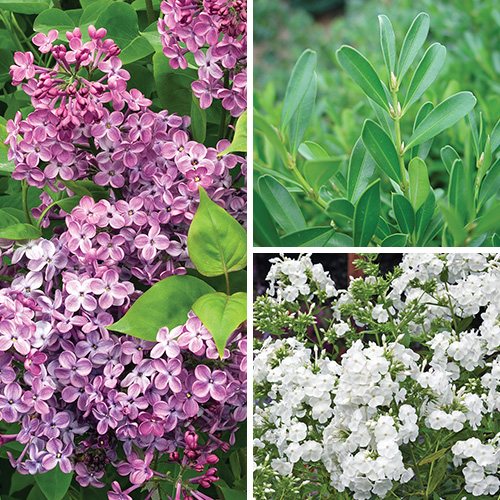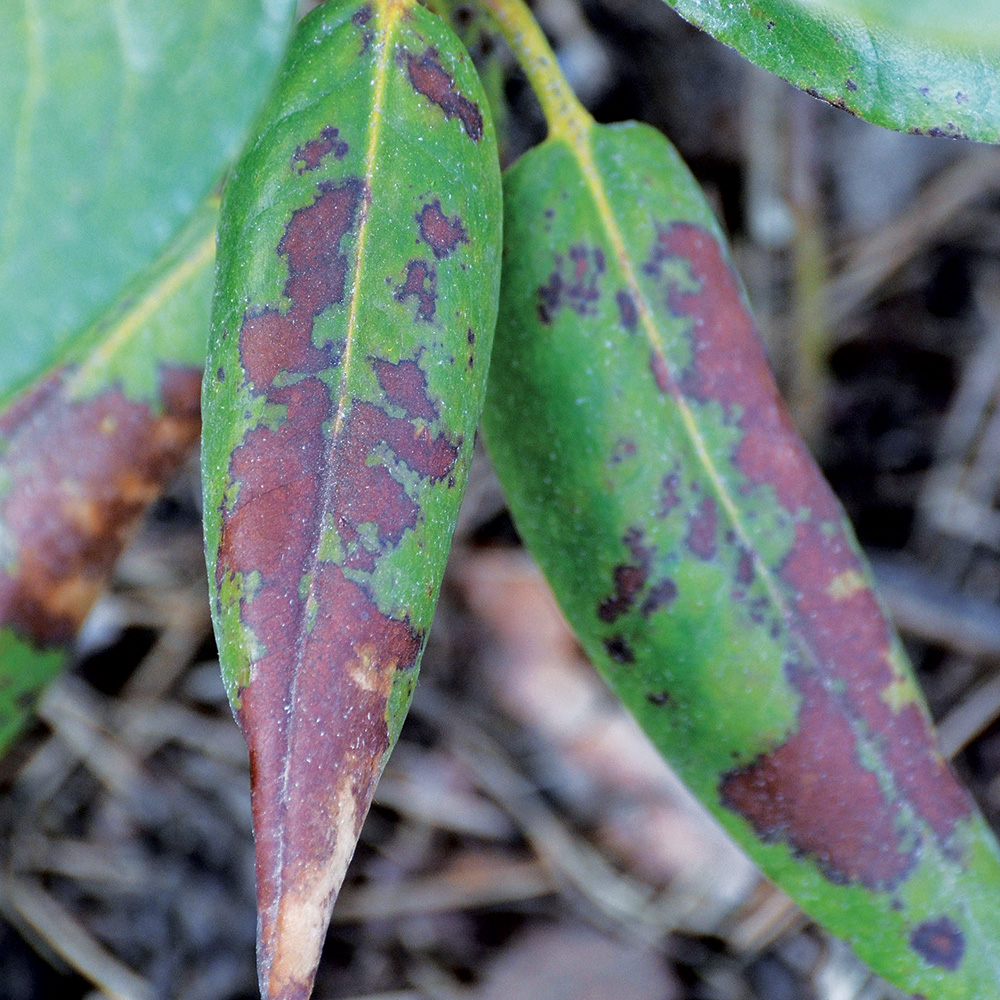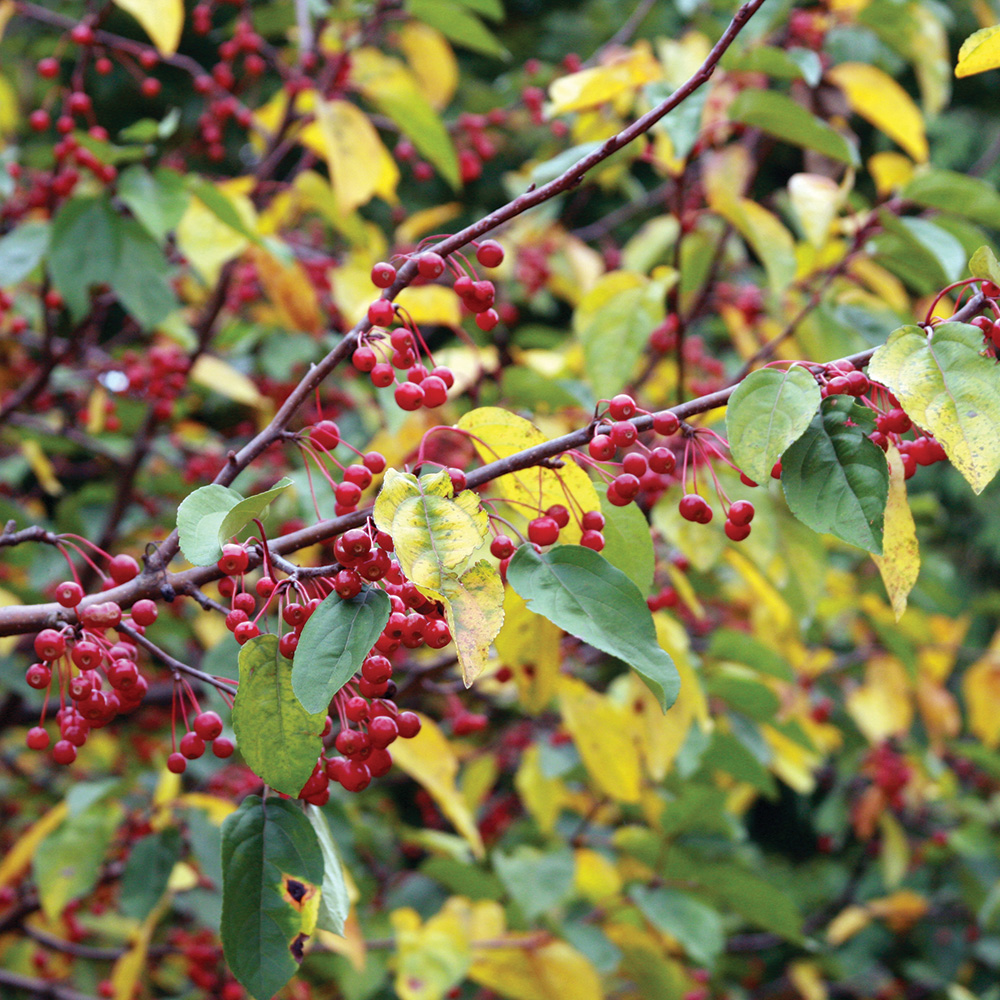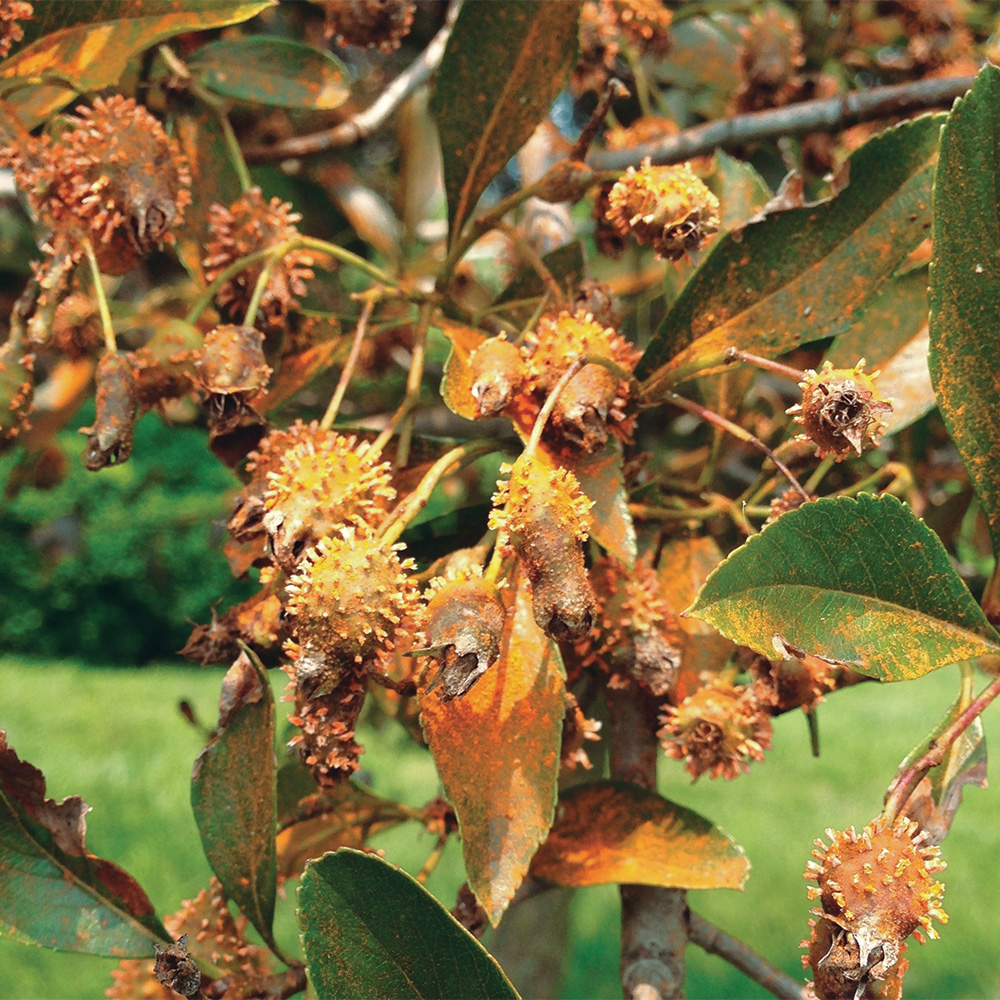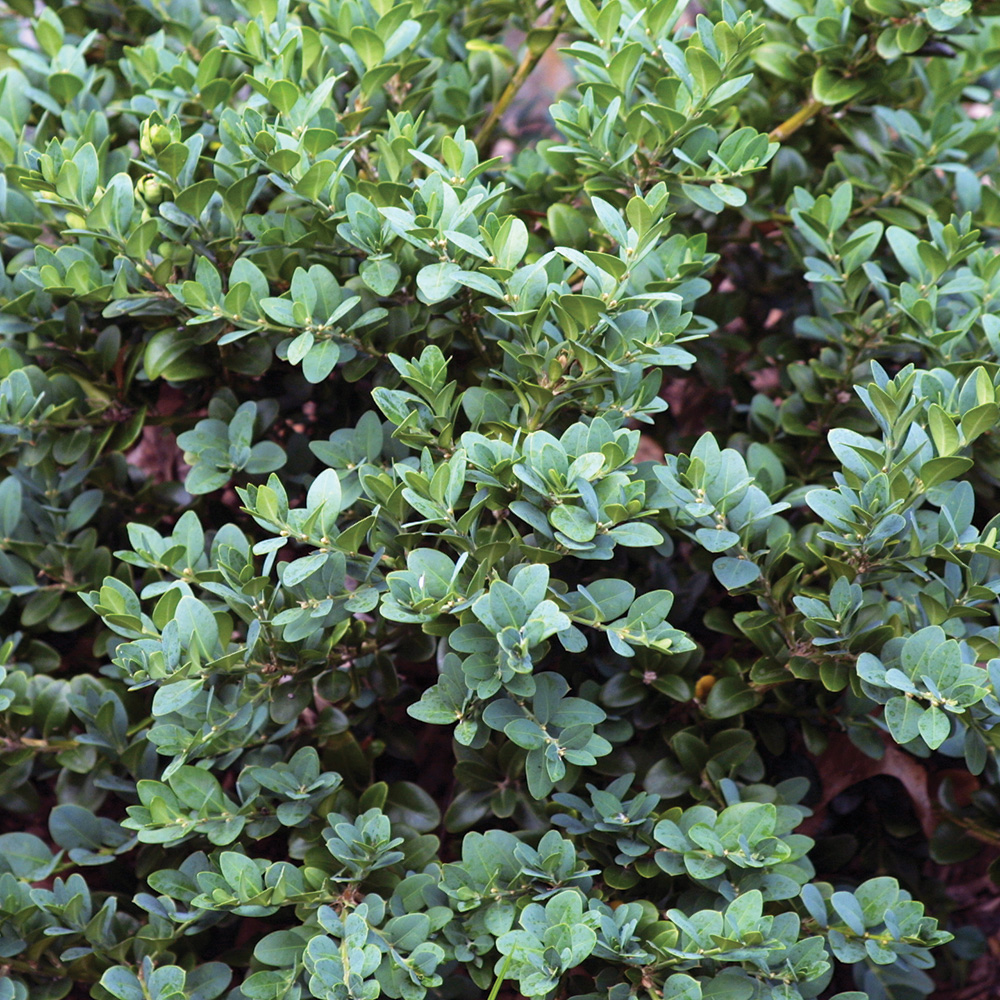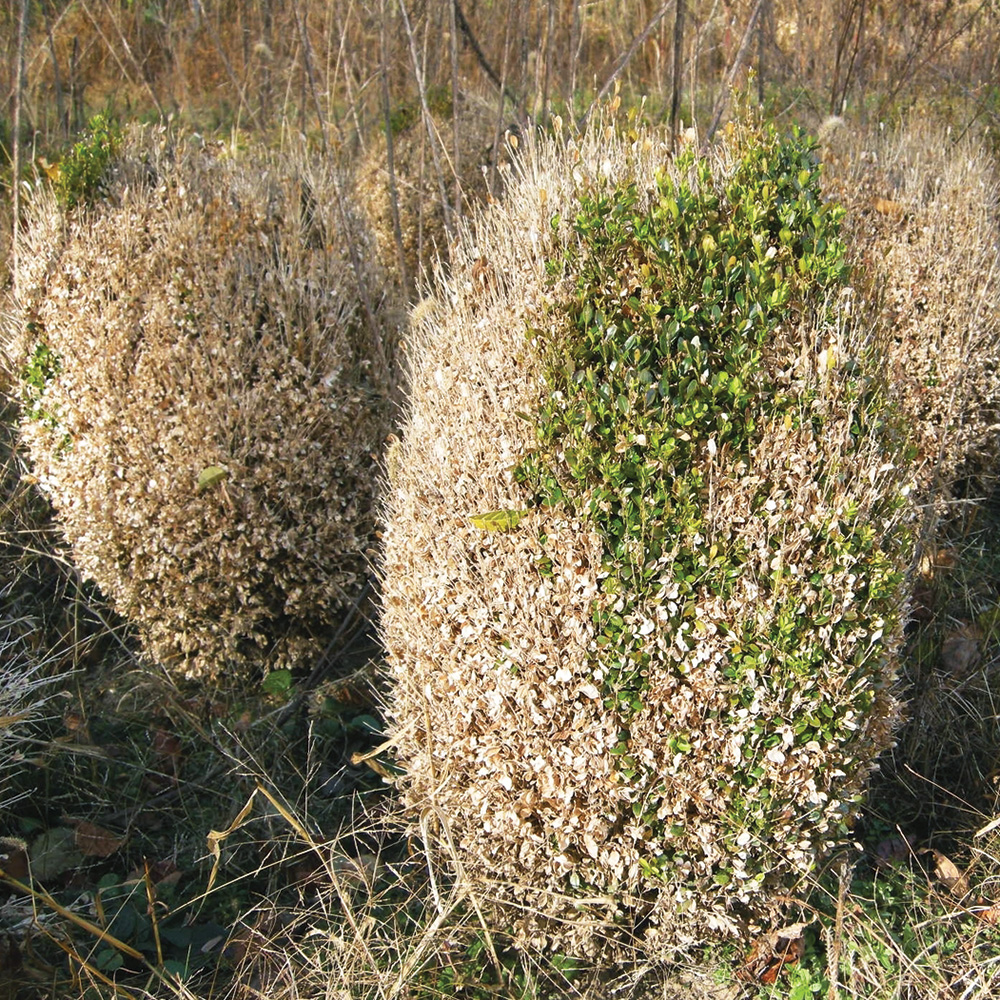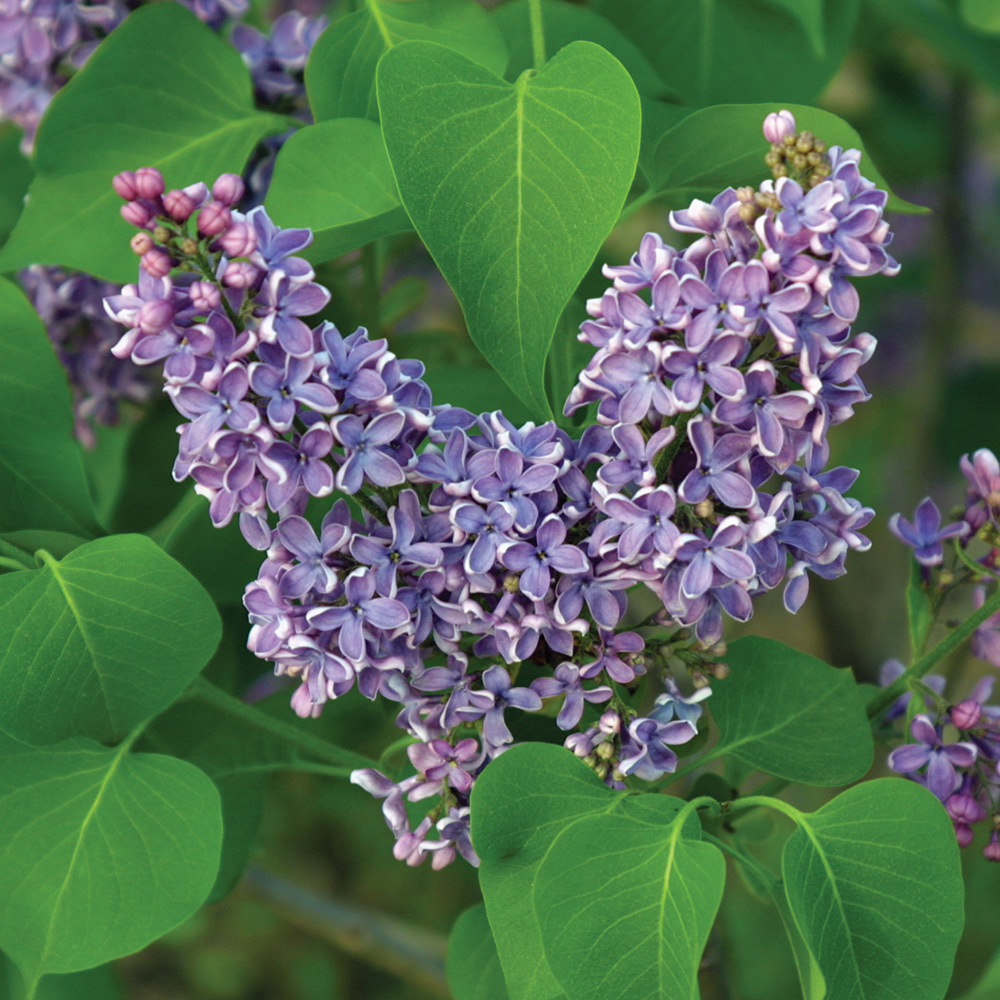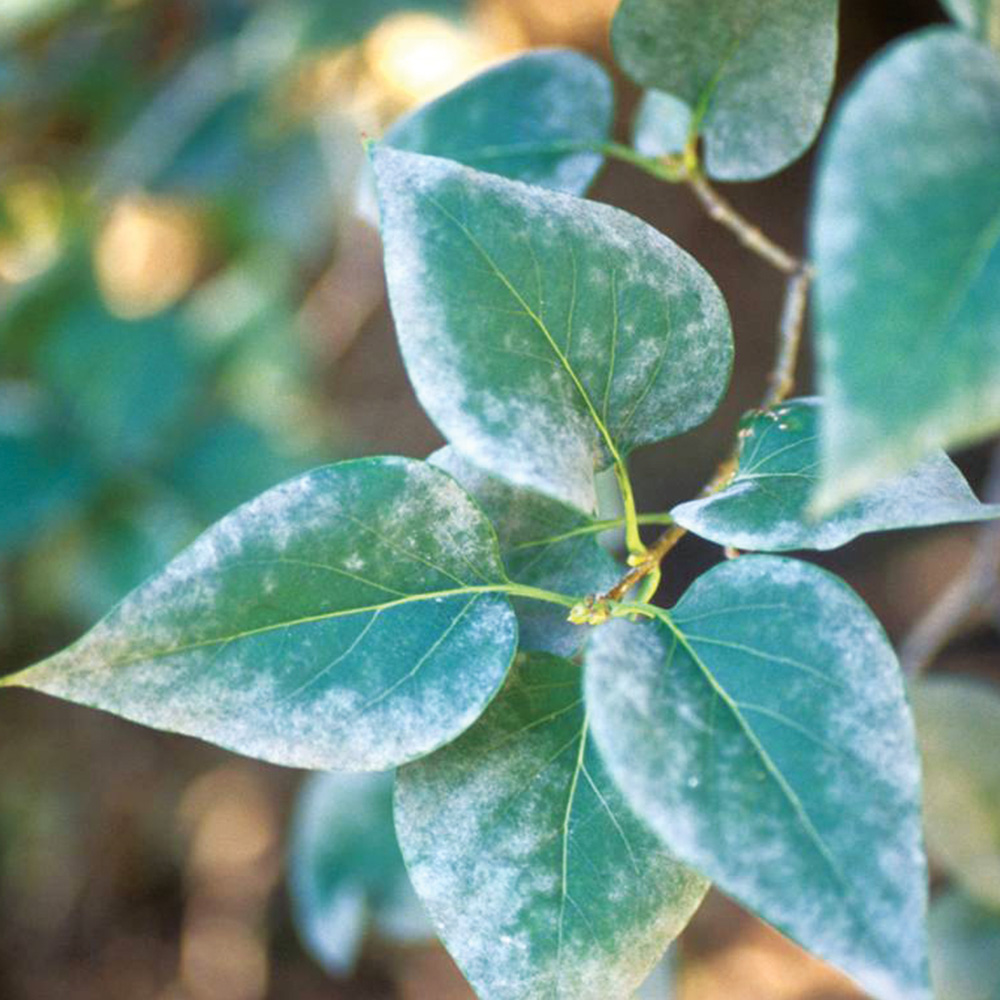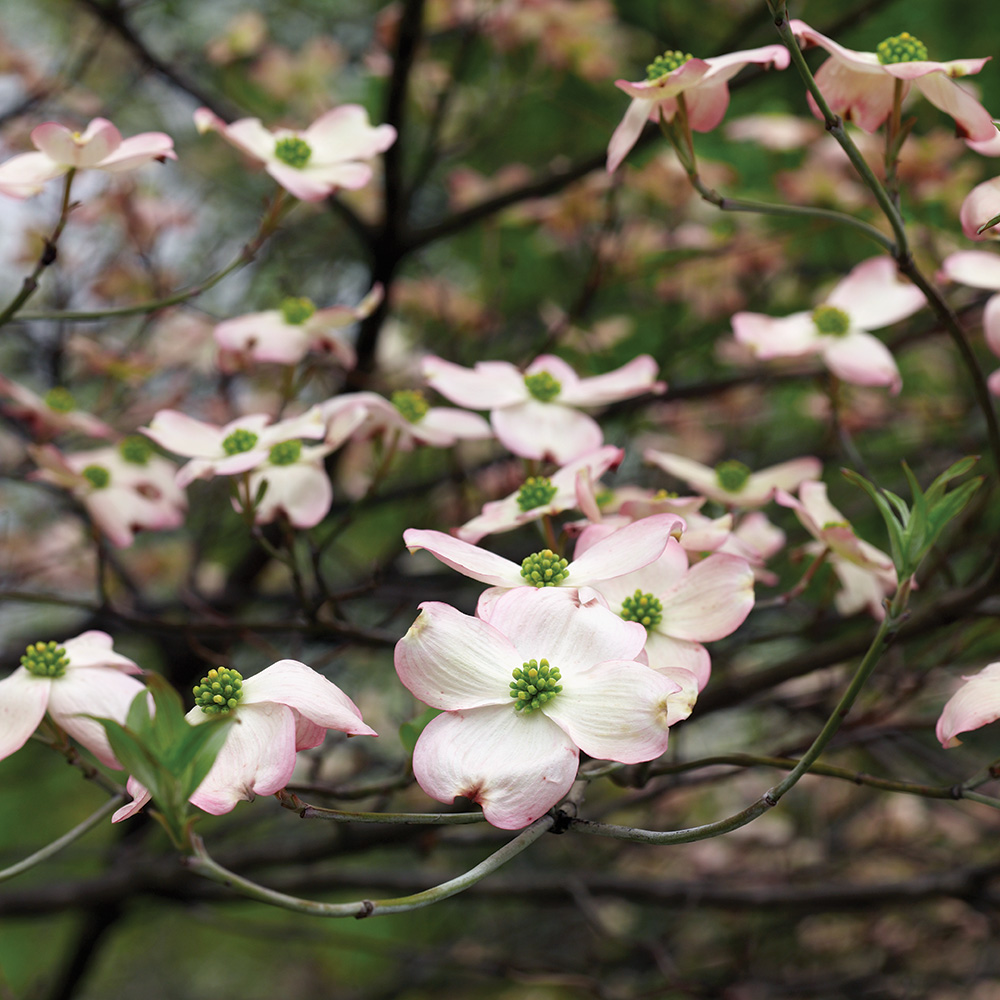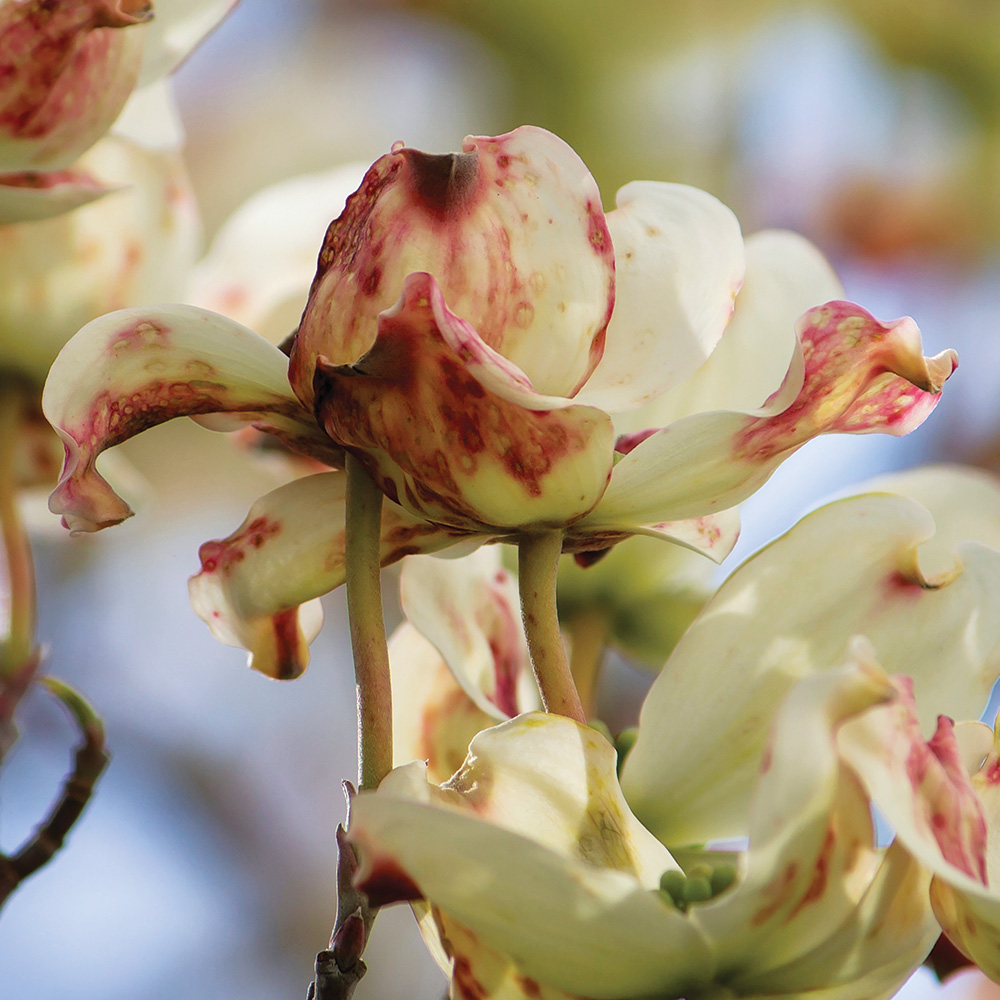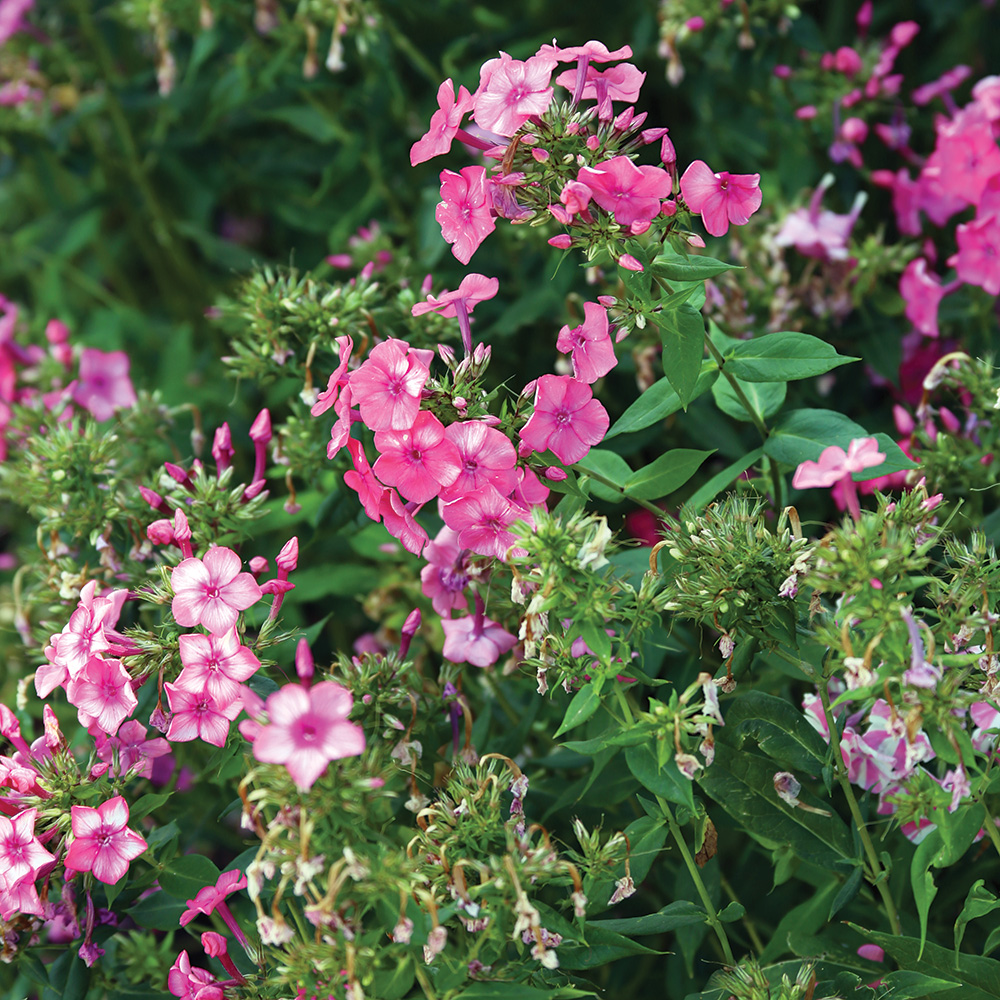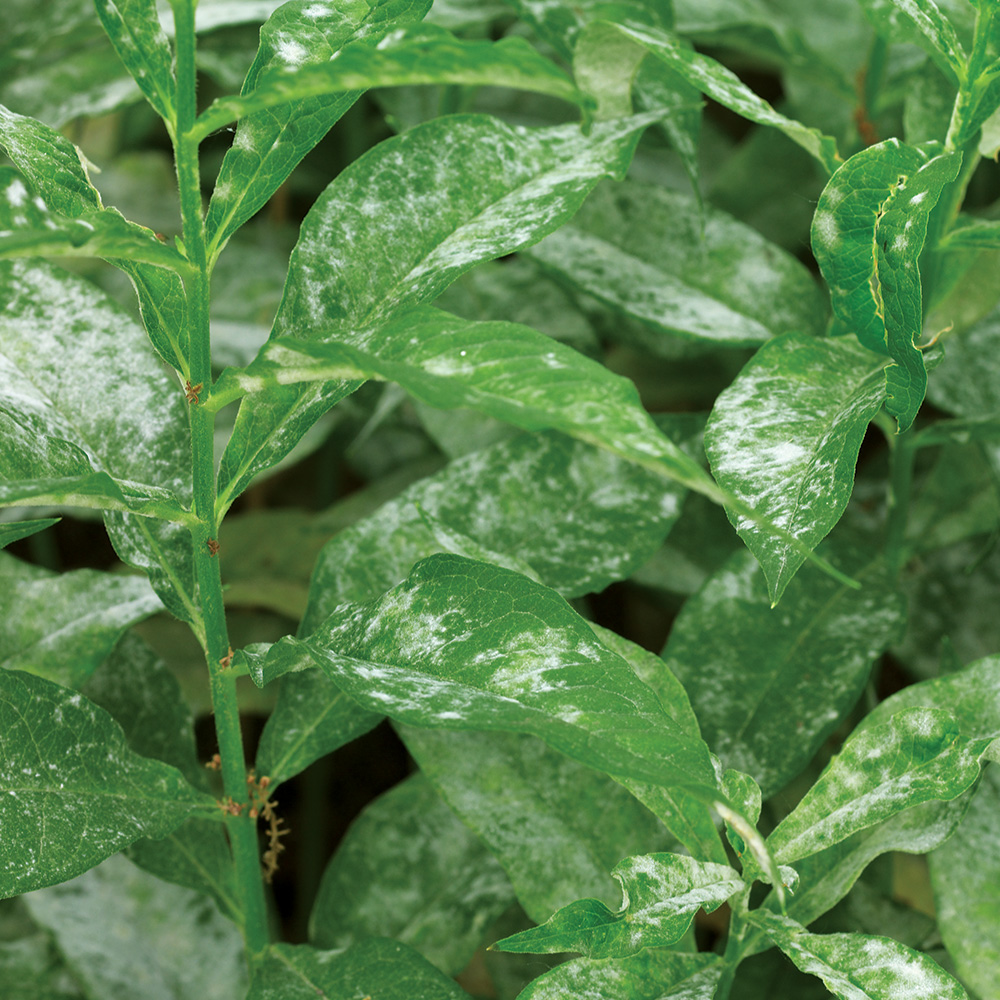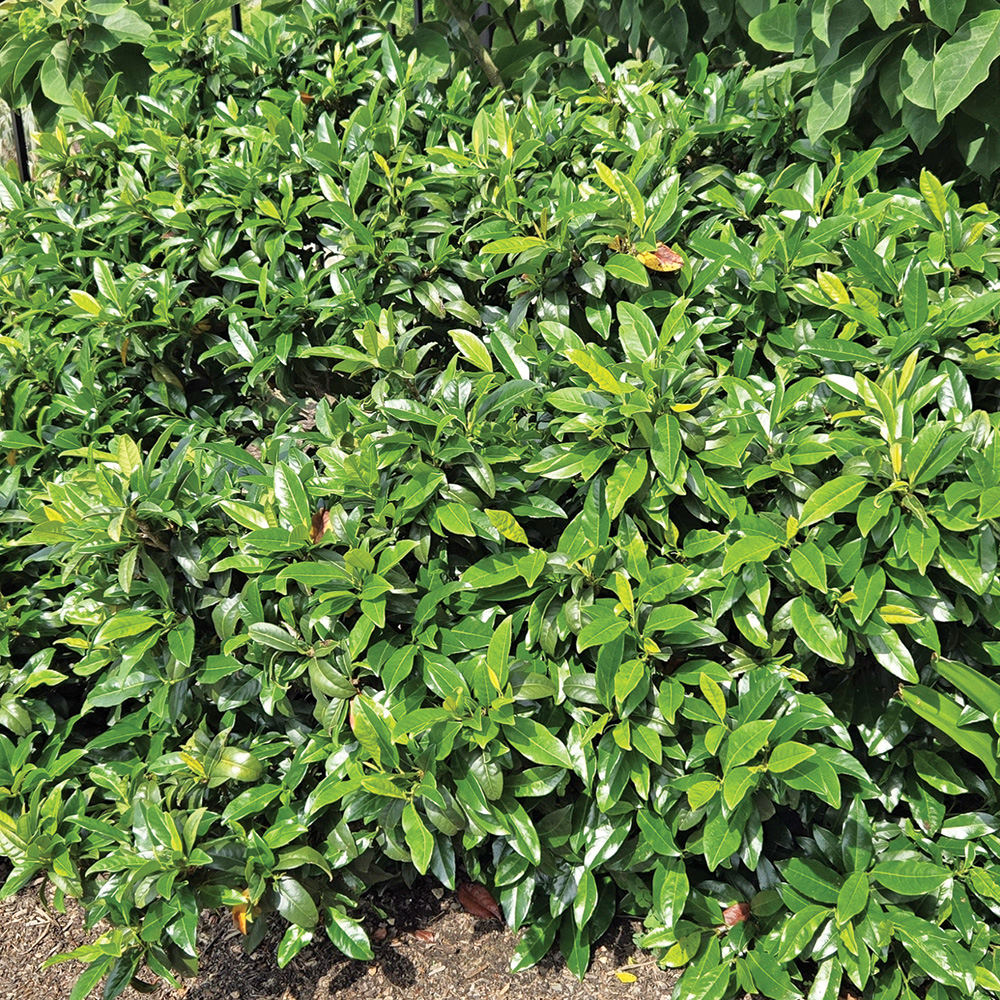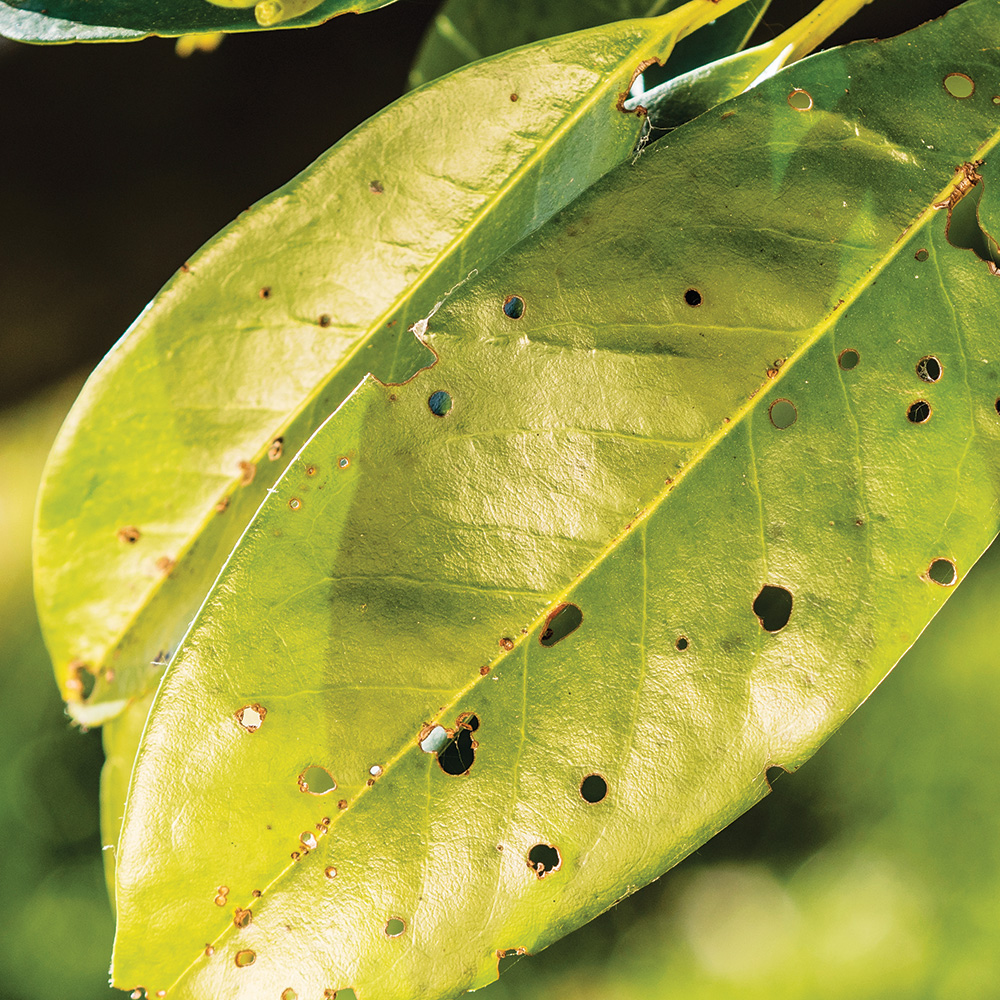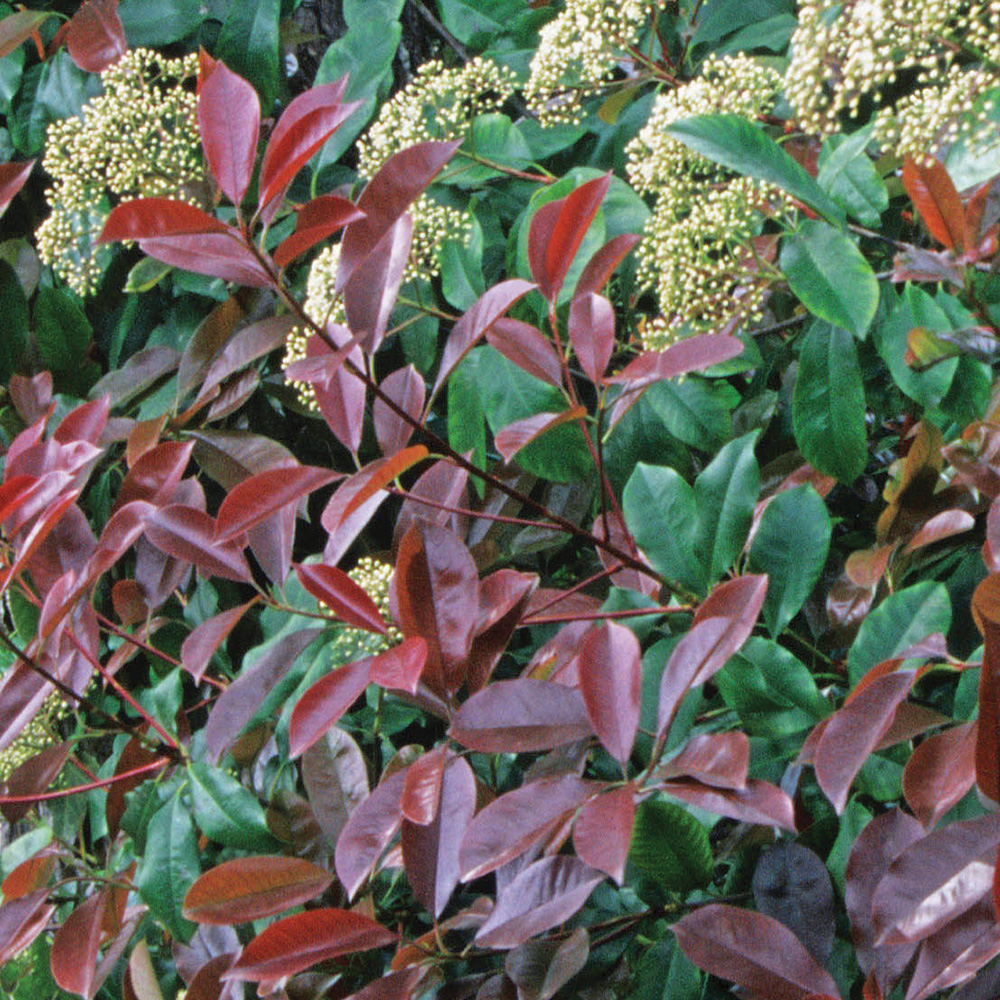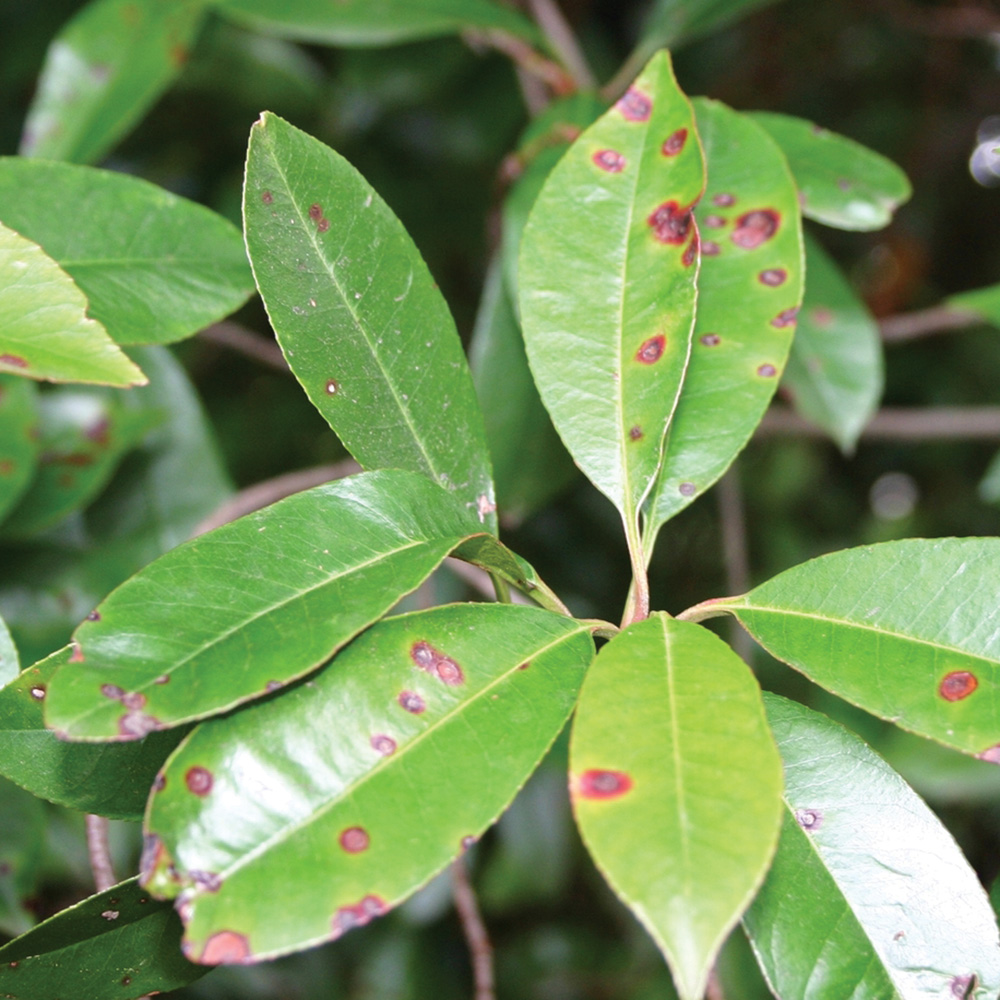If I had a nickel for every time I’ve been asked what product should be used on a lilac to stop powdery mildew, I’d be on a beach somewhere tropical, or, more realistically, using my riches to feed my plant addiction. My response is to rip out the offender and plant something that doesn’t need chemicals to stay healthy. I don’t know many people who enjoy the expense, effort, or ecological detriments of using fungicides and other disease cures and preventatives. Even the homemade remedies are too much of a bother for me; I have better things to do in my garden. Instead of going through the endless cycle of spraying and drenching your plants, then waiting for the next outbreak, perhaps consider the many improved selections of that species or genus, or turning to less troublesome look-alikes. While no plant is completely disease-proof, these options can provide the same or an even better garden show as the old classics, without all the fuss.
Problem plant: Catawba rhododendron
|
|
(Rhododendron catawbiense and cvs., Zones 4–8)
Susceptible to: Phytophthora
Try these instead:
Radiance™ rhododendron won’t sweat it in the heat of summer
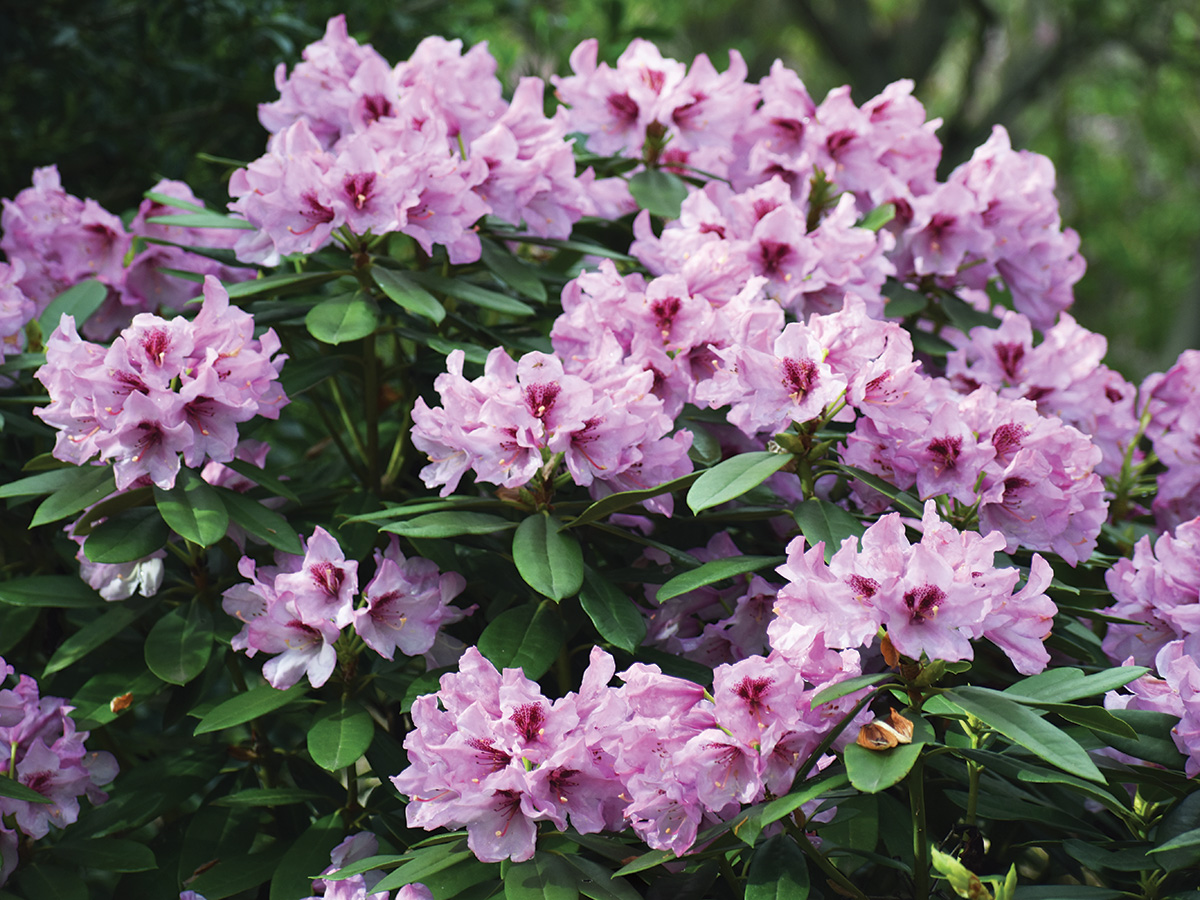
R. ‘Tyler Morris’
Zones: 6–9
Size: 4 to 5 feet tall and wide
Conditions: Partial to full shade; moist, well-drained soil
Native range: Hybrid
In many areas, especially throughout the South, evergreen rhododendrons are difficult to grow because they typically resent heat and humidity. Without special accommodations, rhodies in warmer locales get stressed and become susceptible to myriad diseases. Radiance™ rhododendron and the rest of those in the Southgate® series are proven performers throughout the South and up into traditional rhody country in the North. Large trusses of lilac buds on this selection open to paler pinkish flowers in spring. Provide some shade and well-drained organic soil for best results, although it can take more sun in areas with cooler summers.
Captivating foliage is just the cherry on top of Ruby Ruffle® purple-leaf dwarf peach
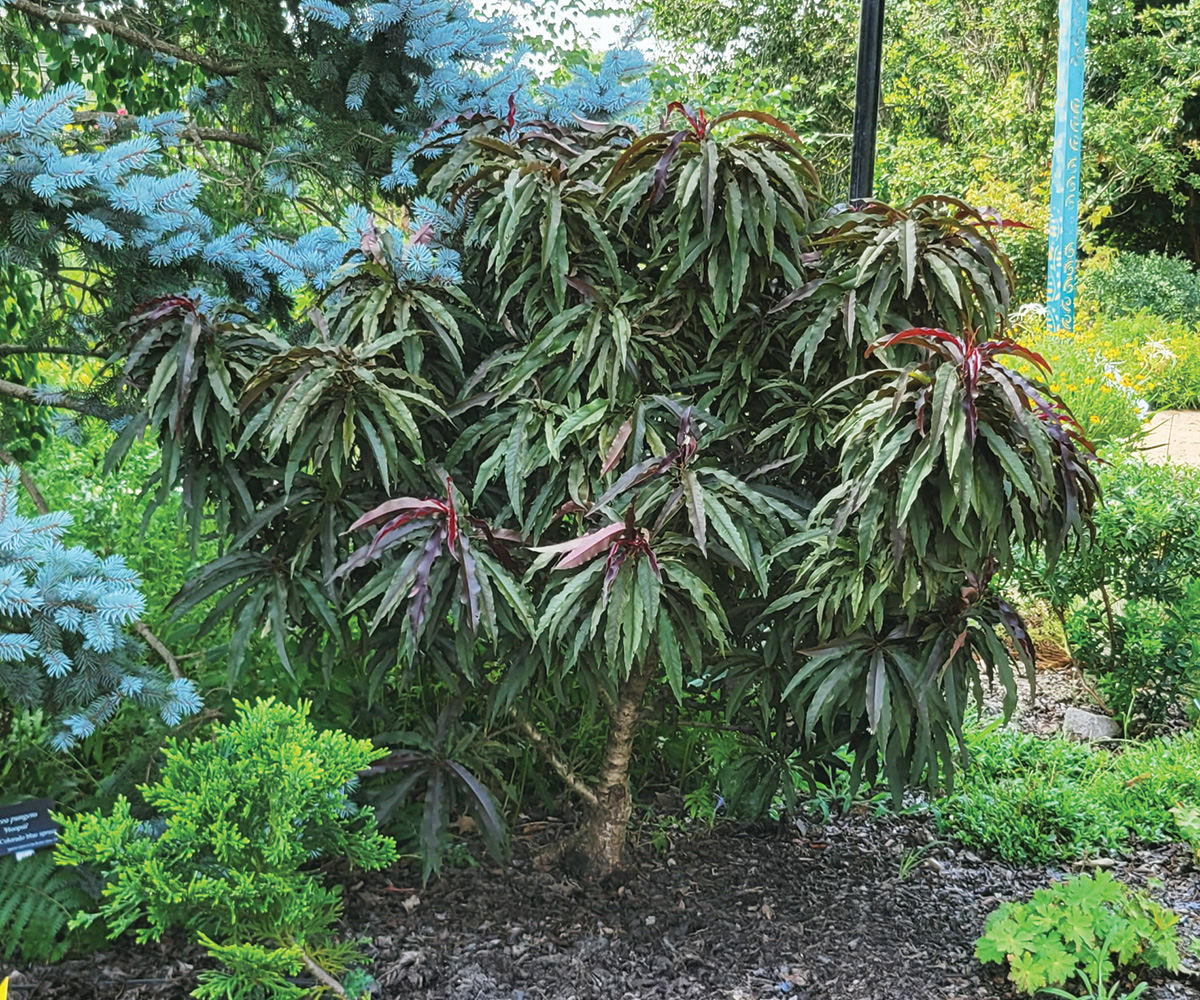
Prunus persica ‘NC Peach-6’
Zones: 5–8
Size: 4 to 7 feet tall and wide
Conditions: Full sun; moist, well-drained soil
Native range: Northwest China
This dwarf peach has rich semidouble deep-pink flowers that cover the branches in early spring just as the foliage begins to appear. The long, narrow leaves emerge dark burgundy and hold their color fairly well through much of the summer. This miniature deciduous tree will produce some attractive fruits, which unfortunately are not edible. It makes a showy specimen in the garden or in a large container. The attractive form and dark bark also provide winter interest. Be aware that the seeds, wilted leaves, and bark of peach trees are toxic to humans and animals.
Problem plant: Crabapple
(Malus spp. and cvs., Zones 3–9)
Susceptible to: Scab, cedar apple rust, powdery mildew, fire blight
Try these instead:
Firebird® crabapple’s large red fruits stay glossy and repel rust
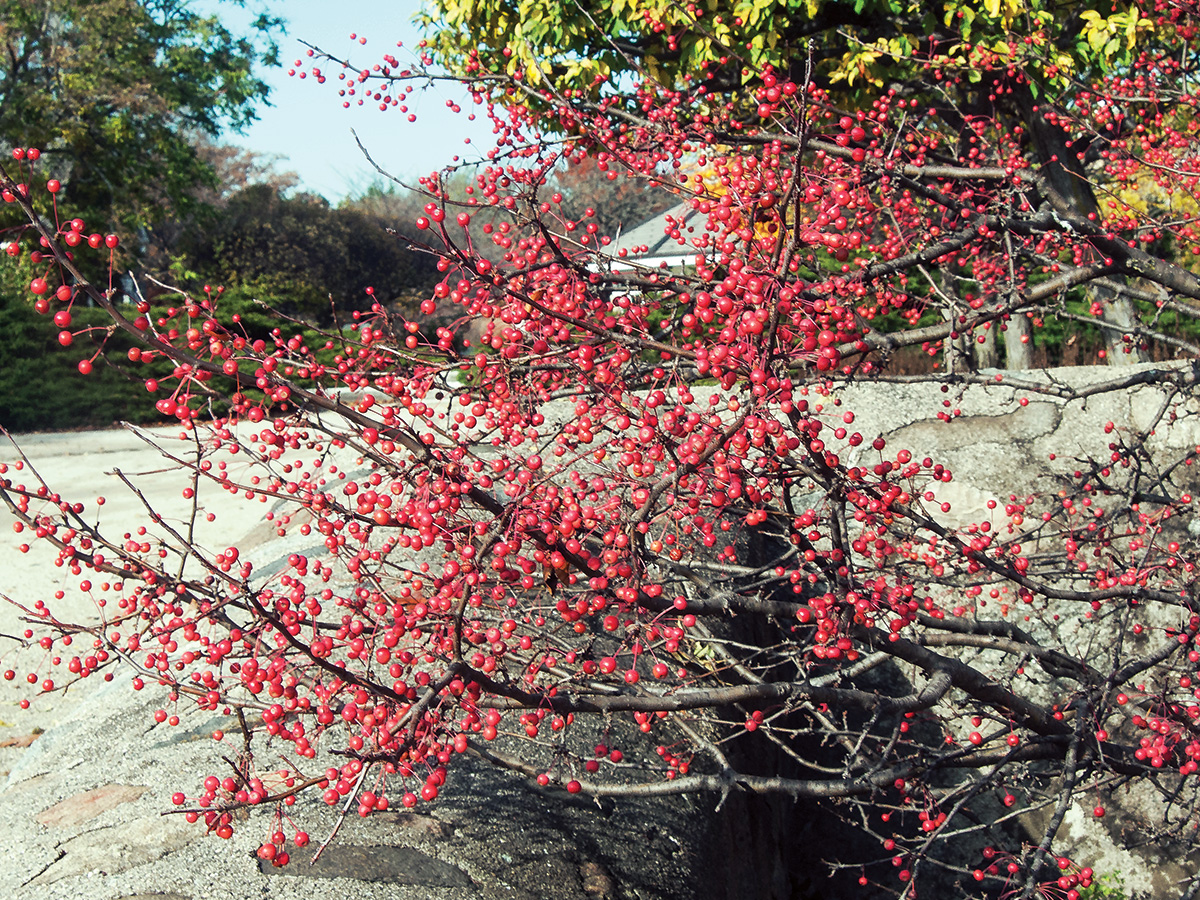
M. sargentii ‘Select A’
Zones: 4–8
Size: 8 to 10 feet tall and wide
Conditions: Full sun; well-drained soil
Native range: Japan
There is a laundry list of diseases that can affect crabapples. Firebird® shows outstanding resistance to just about all of the most common problems. It is a naturally compact tree that has a rounded head when young but will ultimately grow a bit wider than tall. Red buds open to white flowers in a stunning spring show. The almost half-inch-wide bright red fruits that follow are quite persistent throughout fall and into winter.
Japanese snowbell’s year-round interest makes it a sure winner
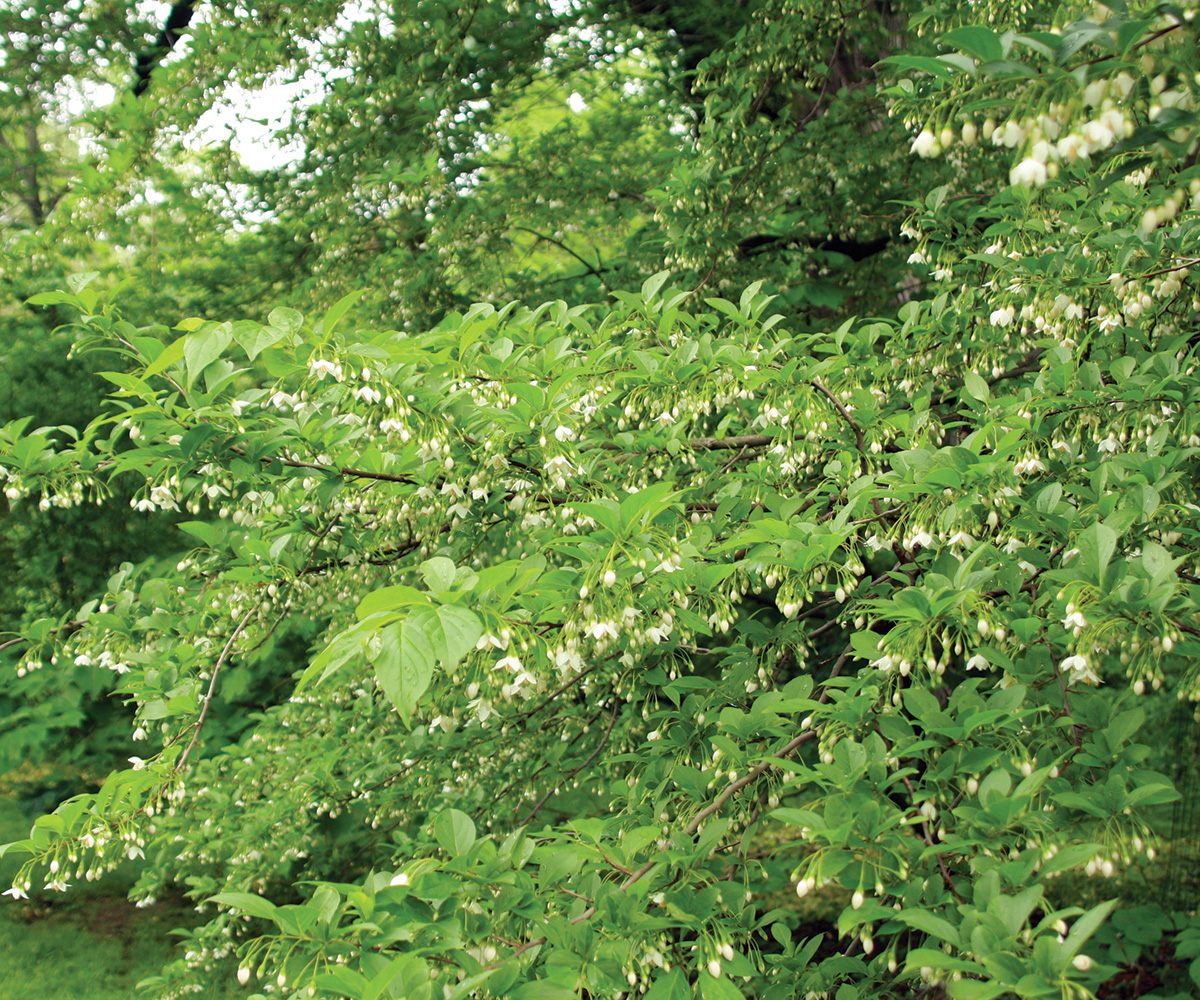
Styrax japonicus
Zones: 5–9
Size: 20 to 30 feet tall and wide
Conditions: Full sun to partial shade; well-drained soil
Native range: Japan, Korea, and southern China
Japanese snowbell extends the spring season beyond early blooming trees and shrubs. One-inch-wide white bells with yellow stamens emerge in late spring and dangle under leaves that sit above the flowers like little butterflies. These blooms are mildly fragrant and very showy up close. Small gray fruits follow, which provide some interest. Foliage turns yellow and red in fall and the smooth, sinewy gray bark is also quite beautiful in winter. Flowering is best in full sun, and plants need relatively steady moisture over summer to thrive.
Problem plant: Boxwood
|
|
(Buxus sempervirens and cvs., Zones 5–8)
Susceptible to: Boxwood blight
Try these instead:
Harland boxwood’s resilience will have you replanting that hedge you gave up on
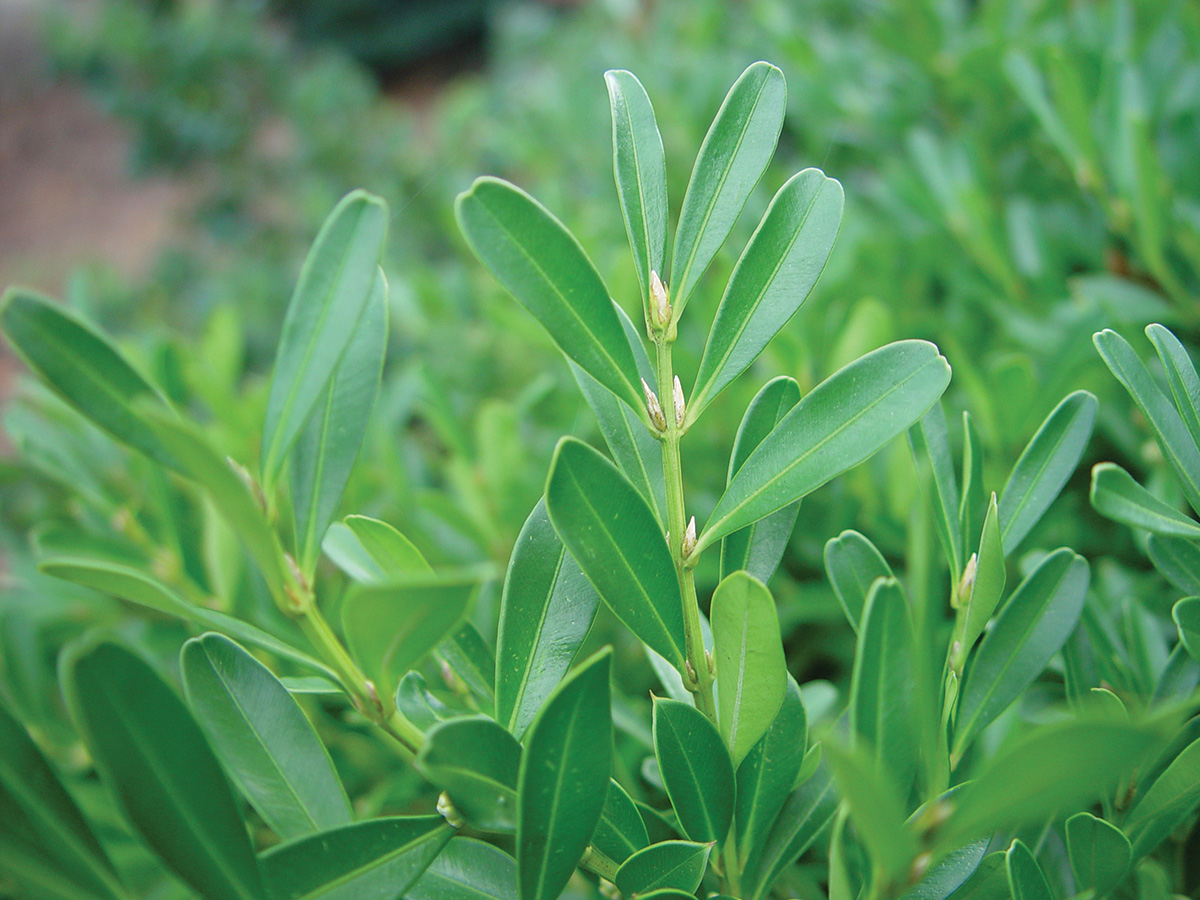
B. harlandii
Zones: 7–9
Size: 2 to 5 feet tall and wide
Conditions: Full sun to partial shade; evenly moist, well-drained soil
Native range: Coastal southeast China and Vietnam
This handsome evergreen features larger, glossier leaves than typical boxwoods. It grows as a small rounded to vase-shaped shrub, often with its stems showing at the base instead of its foliage extending flush to the ground. Its typical size is 3 feet tall and wide, but it can grow to 5 feet tall in time. In addition to showing resistance to blight, it is quite resistant to damage from leaf miners. Like most boxwoods, it is drought tolerant once established and more shade tolerant than one would think.
‘Raulston Hardy’ small-leaved viburnum holds its own even when not in bloom
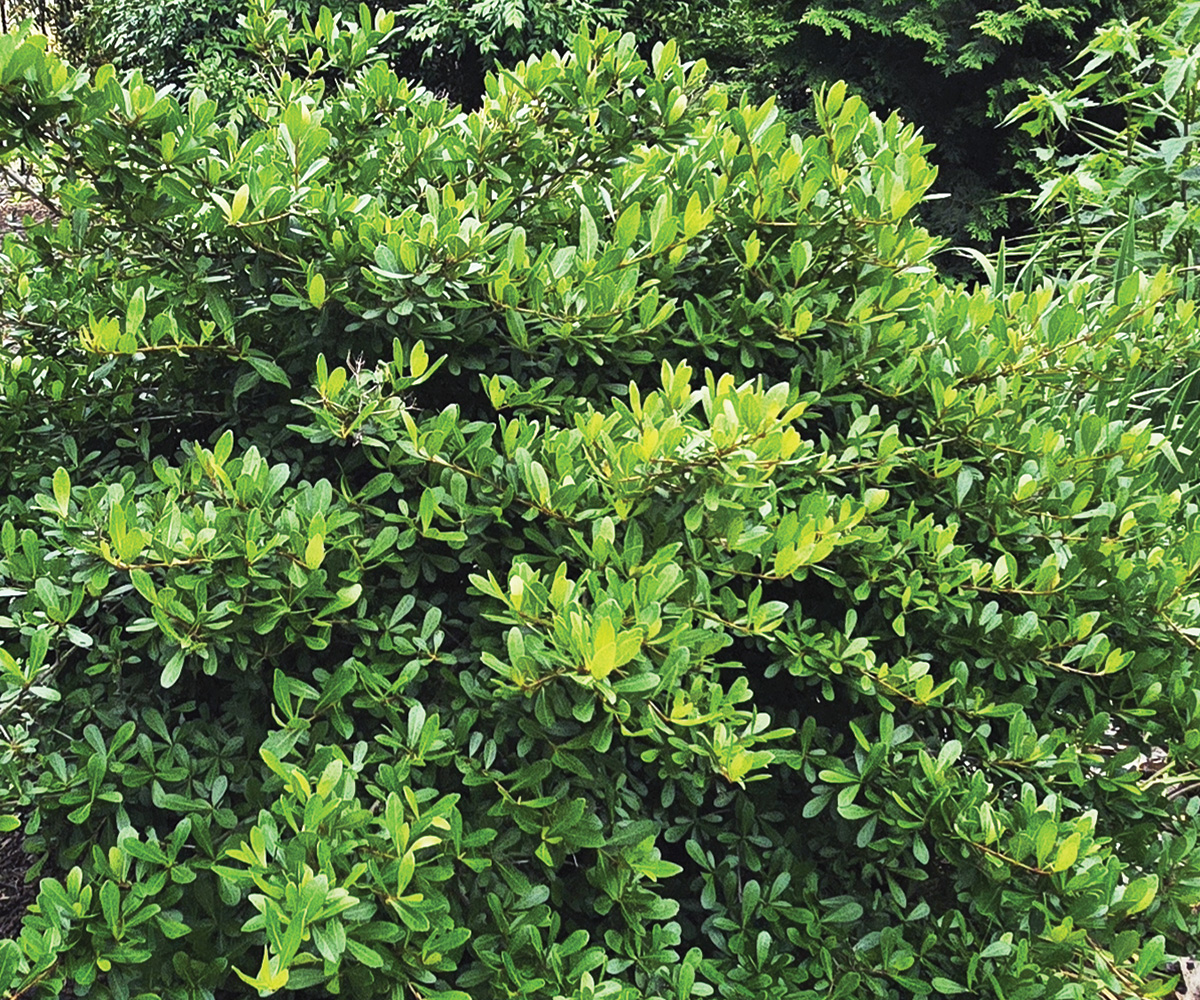
Viburnum obovatum ‘Raulston Hardy’
Zones: 6–10
Size: 3 to 4 feet tall and wide
Conditions: Full sun to partial shade; moist, well-drained soil
Native range: Southeastern United States
‘Raulston Hardy’ small-leaved viburnum is a selection of a native southeastern shrub that forms a small dome of semi-evergreen foliage with masses of white pollinator-friendly flowers in mid-spring followed by black fruits. Often it will continue to flower off and on throughout much of the year. In warm winters the foliage takes on plum tones but will shed if temperatures drop to the mid to lower teens. Once established, it is incredibly drought tolerant. Over time, it can sucker (but those shoots are easily removed).
Problem plant: Common lilac
(Syringa vulgaris and cvs., Zones 3–7)
Susceptible to: Powdery mildew
Try these instead:
‘Declaration’ early flowering lilac provides the classic look without the classic problems
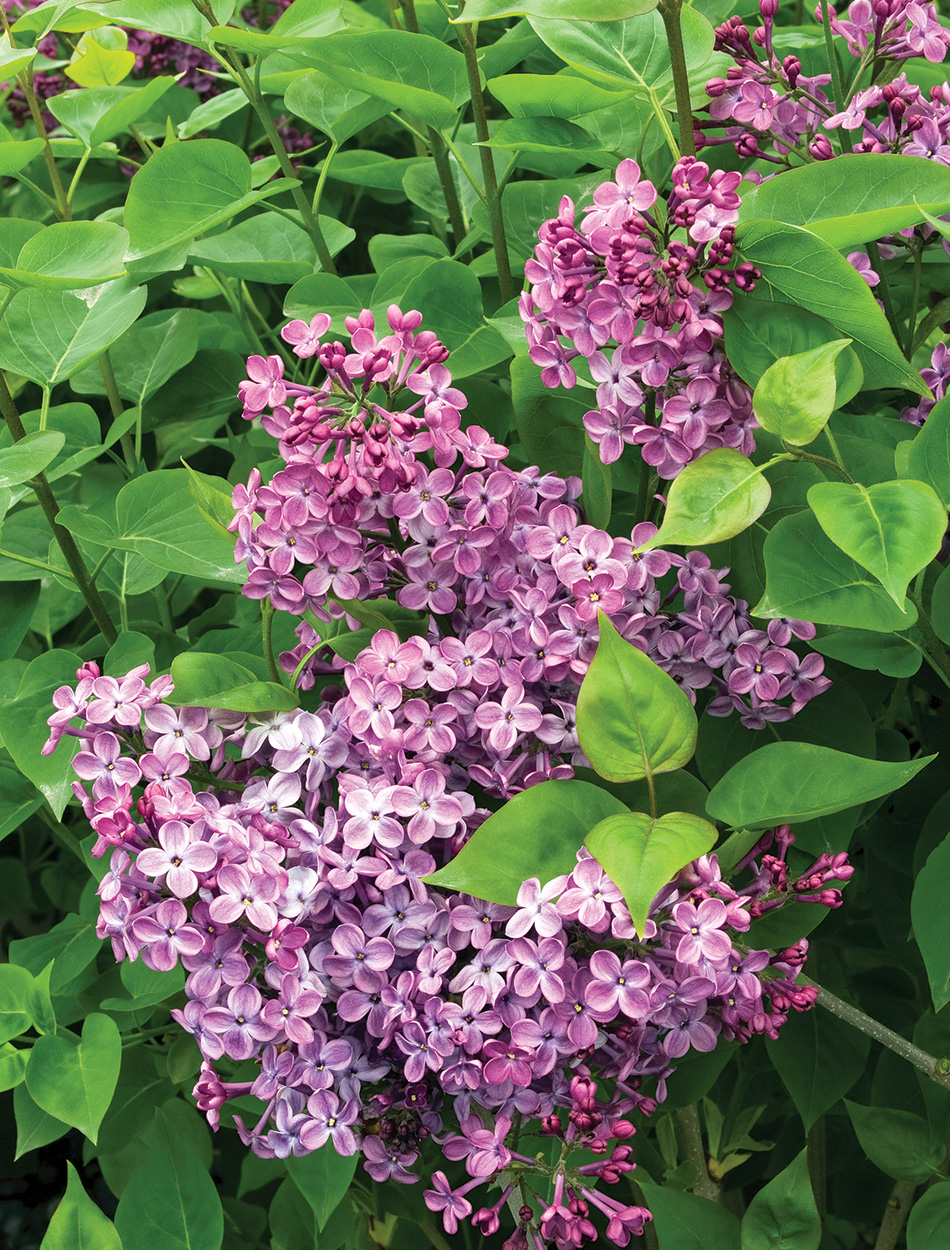
S. × hyacinthiflora ‘Declaration’
Zones: 4–7
Size: 6 to 8 feet tall and 5 to 6 feet wide
Conditions: Full sun; well-drained soil
Native range: Hybrid
One of several outstanding introductions from the U.S. National Arboretum, ‘Declaration’ early flowering lilac has flowers that bloom about a week before the common lilac but otherwise is quite similar, minus the tendency toward powdery mildew. The flowers have a slightly more burgundy tone to them and are very fragrant. Plant it in full sun with good air circulation, and prune after flowering to maintain size if needed.
Beautybush proves that you can be tough and pretty
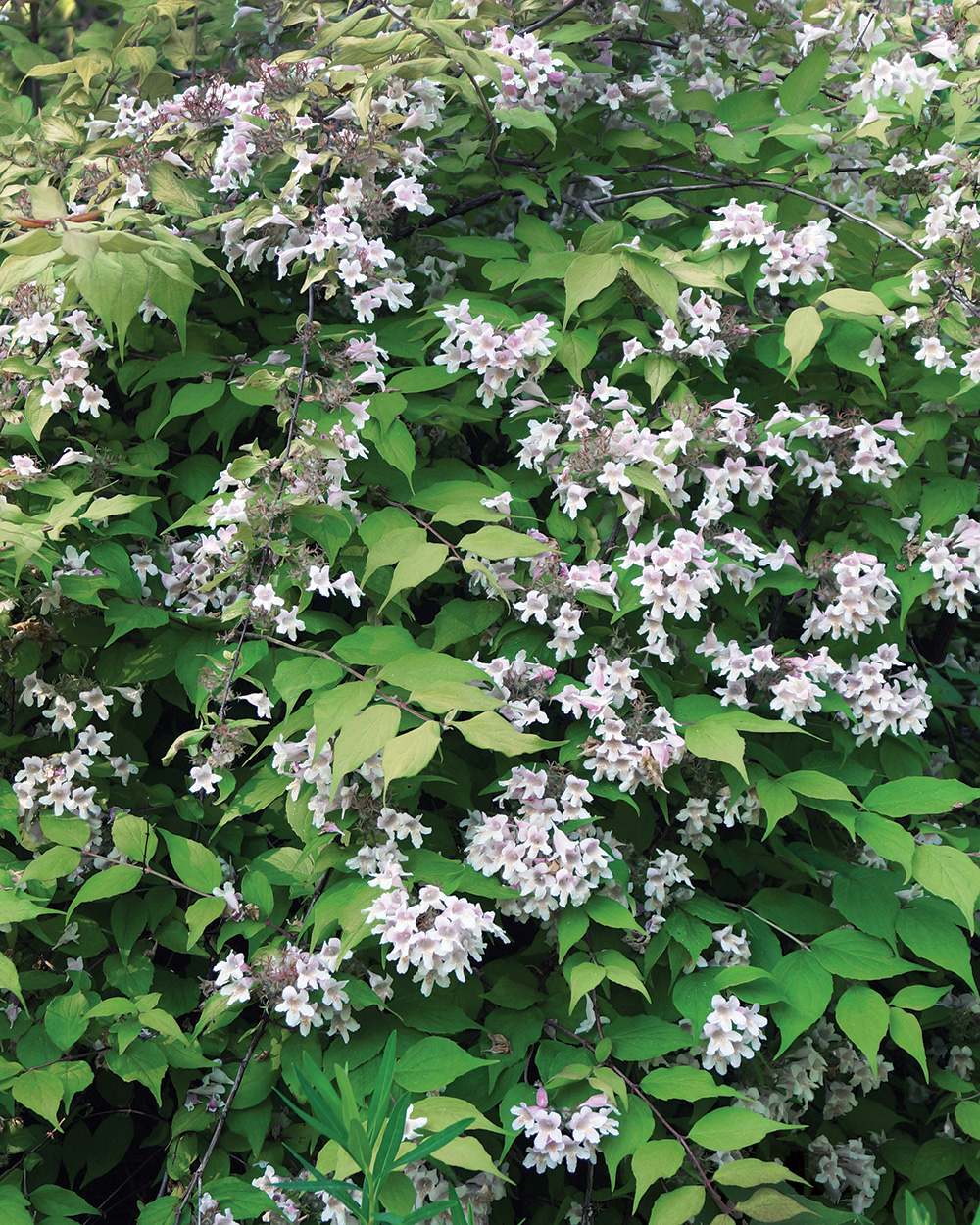
Kolkwitzia amabilis
Zones: 4–8
Size: 6 to 10 feet tall and wide
Conditions: Full sun; well-drained soil
Native range: Eastern China
This shrub certainly lives up to the name beautybush in spring when it explodes in bloom across its wide, arching form. Individual blossoms are pale pink with yellow throats. This species was once more widely grown, but its large size coupled with increasingly smaller landscapes has reduced its popularity. Beautybush flowers on old wood, so prune it after blooming to control its size and to ensure that it flowers the following spring. Once established, this is an exceptionally resilient shrub.
Problem plant: Flowering dogwood
(Cornus florida, Zones 5–8)
Susceptible to: Powdery mildew, spot anthracnose
Try these instead:
Cherokee Brave® flowering dogwood provides a vivid spring show
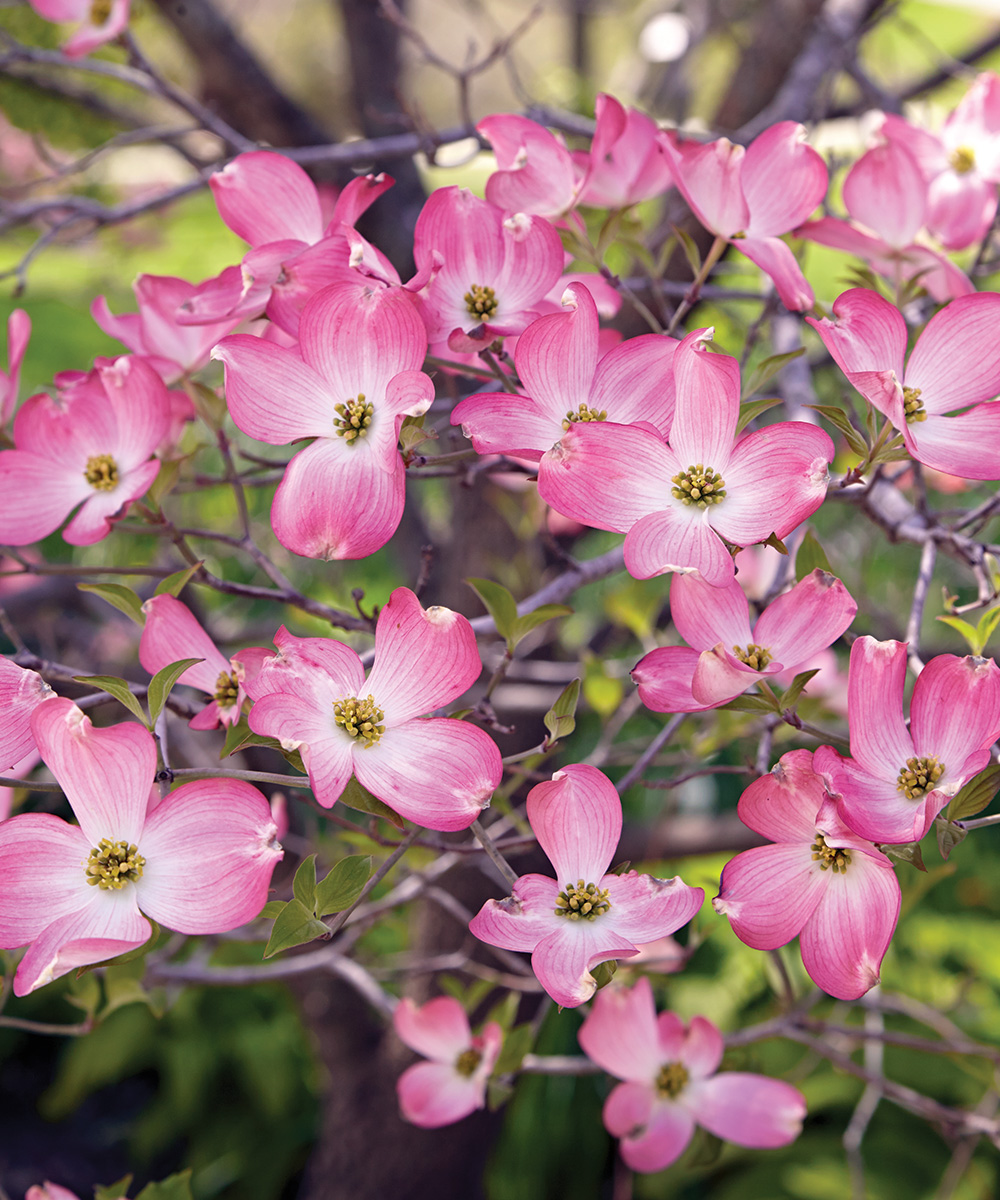
C. florida ‘Comco No. 1’
Zones: 5–9
Size: 15 to 30 feet tall and 25 to 35 feet wide
Conditions: Full sun to partial shade; well-drained soil
Native range: Eastern North America
This selection of our native dogwood was found as a chance seedling in Tennessee, where it stood out from its siblings with faster and more robust growth. The new growth flushes out with burgundy coloring, and the flower bracts are a deep pink-red. Over time, Cherokee Brave® has proven to be quite mildew resistant as well as having better-than-normal anthracnose resistance. The small yellow flowers in the center of the showy bracts provide nectar for pollinators. In fall, birds flock to the red berries that follow. For best results, provide a rich, moist but well-drained acidic soil, and mulch well to keep the roots cool.
The delicate baby-pink bracts of Stellar Pink® dogwood belie its vigor
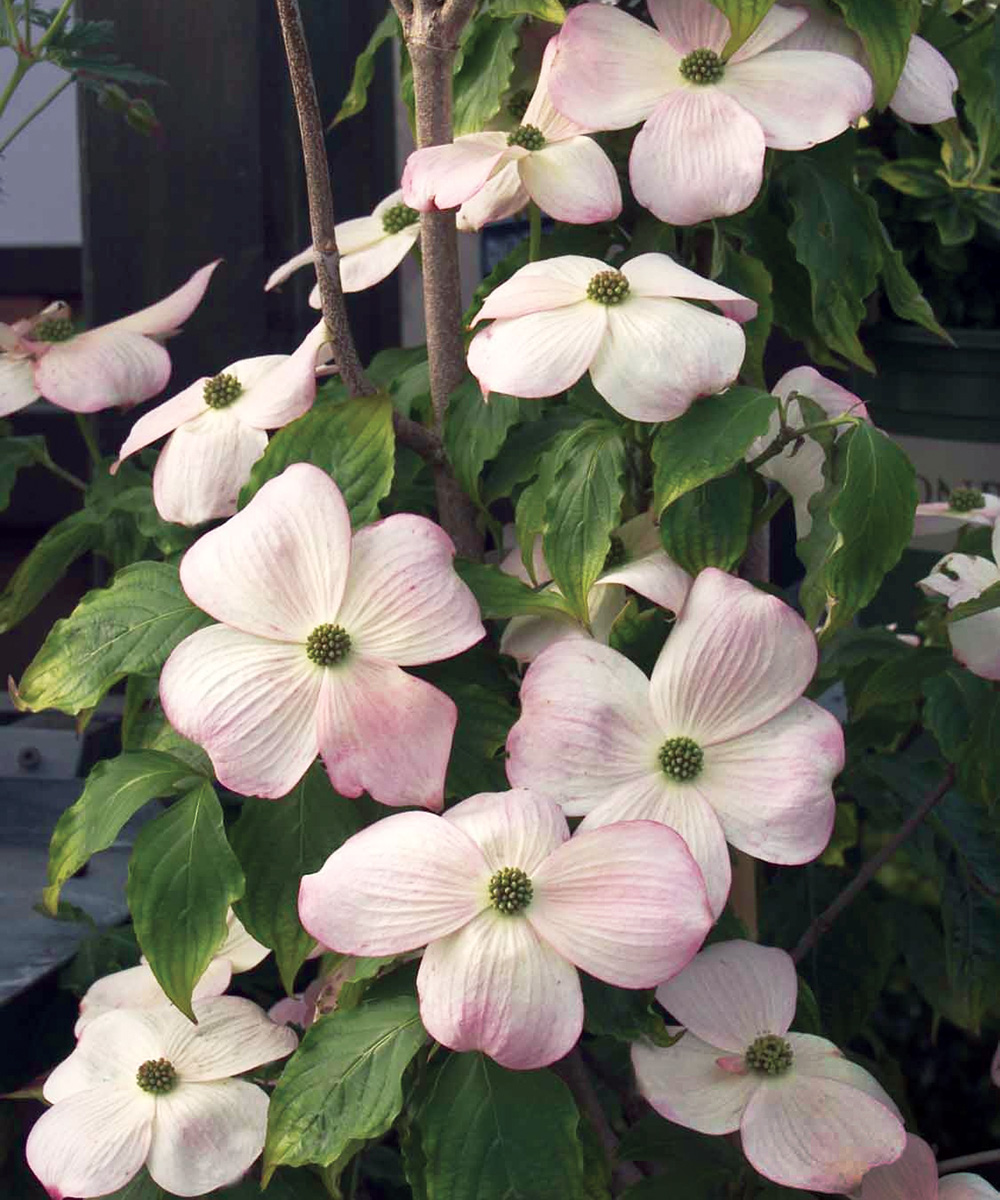
C. × rutgersensis ‘Rutgan’
Zones: 5–9
Size: 15 to 30 feet tall and wide
Conditions: Full sun to partial shade; well-drained soil
Native range: Hybrid
Stellar Pink® bears large soft-pink bracts that overlap to give an especially showy display. It blooms just after flowering dogwood, right as its leaves begin to emerge. This selection is a vigorous grower when young, with a very uniform habit. It also has excellent powdery mildew and anthracnose resistance. In addition to its resiliency and showy blossoms, its fall foliage color is bright red. As a sterile hybrid, it produces no fruit. It prefers a moist, well-drained soil but has shown quite good drought tolerance compared to flowering dogwood and will accept more difficult situations.
Problem plant: Garden phlox
(Phlox paniculata, Zones 3–8)
Susceptible to: Powdery mildew
Try these instead:
Beloved for a reason, ‘David’ phlox remains one of your best bets
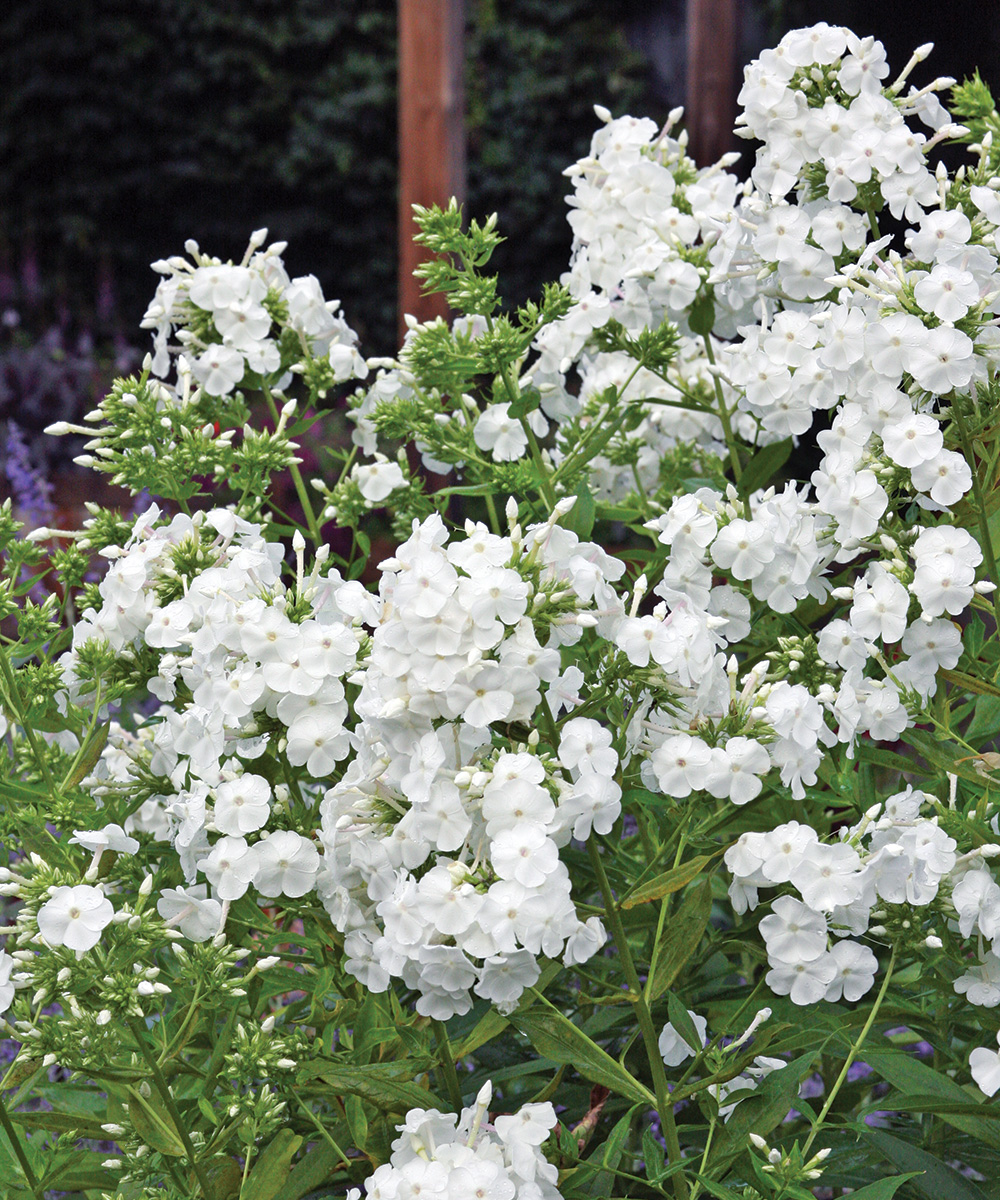
P. paniculata ‘David’
Zones: 3–8
Size: 2 to 4 feet tall and 2 to 3 feet wide
Conditions: Full sun to partial shade; well-drained soil
Native range: Eastern North America
This classic selection, originally found growing in southeastern Pennsylvania, revolutionized the beautiful but mildew-prone native garden phlox. Starting in early summer, ‘David’ is topped by sturdy stalks bearing masses of flowers in tiered domes. Instead of the typical pinkish-lilac flower color of the species, ‘David’ is pure white, with showy flowers that attract butterflies in profusion. It does not like to dry out while in active growth, so provide water or a summer mulch.
Large-leaved phlox is a native species so nice you might just let it run wild
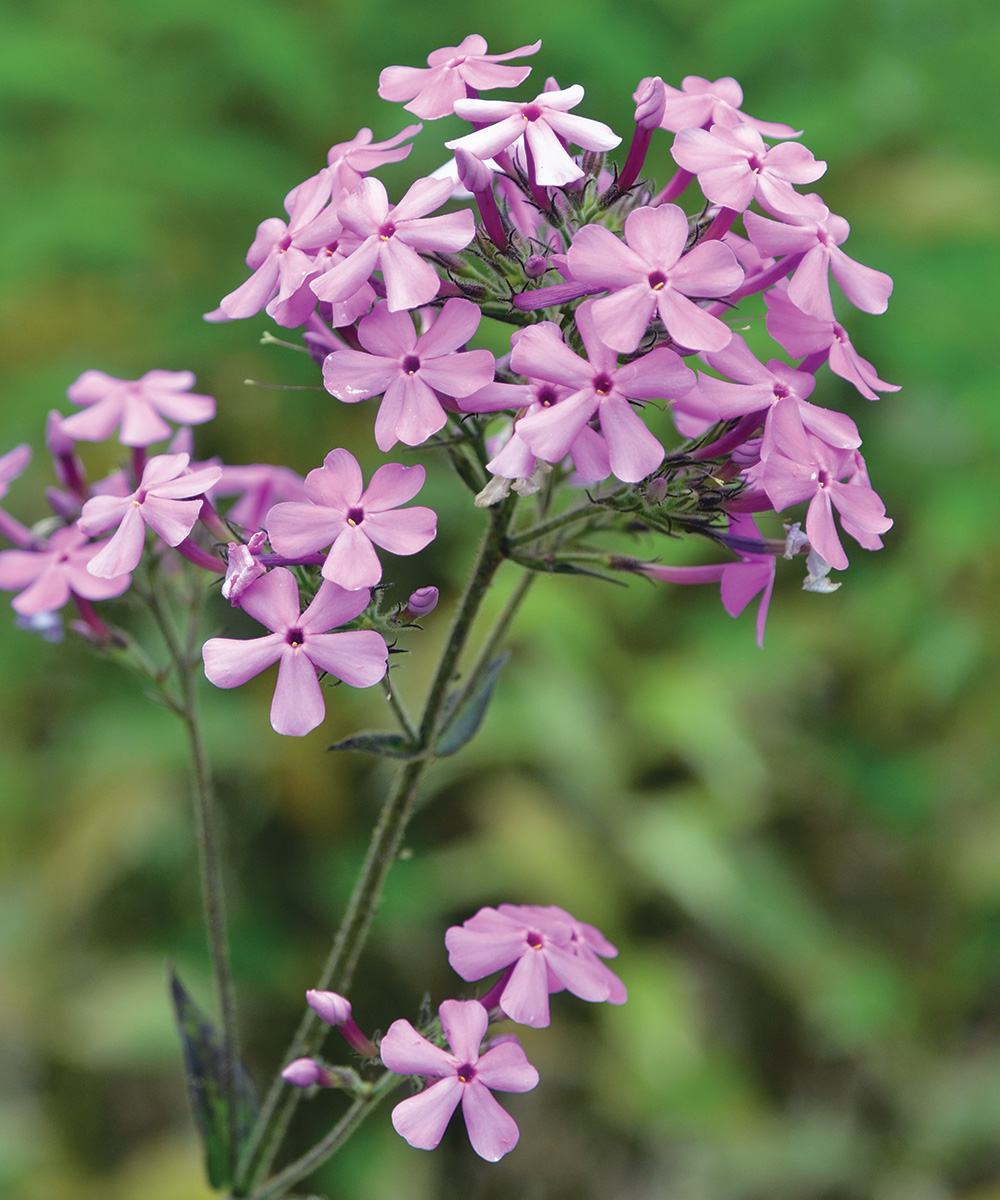
P. amplifolia
Zones: 4–9
Size: 2 to 3 feet tall and wide
Conditions: Full sun to partial shade; moist, well-drained soil
Native range: Southeastern United States
This widespread native is not nearly as common as garden phlox but deserves to be much more widely known. The blossoms tend to be lighter in color than its more popular cousin, and the flower clusters are held higher above the foliage for a softer look. This species will meander about the garden via underground rhizomes and can create sizable patches. Large-leaved phlox’s excellent mildew resistance, vigorous habit, and increased drought tolerance make it a no-brainer for perennial borders, pollinator gardens, or natural meadows.
Problem plant: Cherry laurel
|
|
(Prunus laurocerasus and cvs., Zones 6–8)
Susceptible to: Shot hole fungus
Try these instead:
A close look-alike, Portuguese laurel has the added bonus of heat tolerance
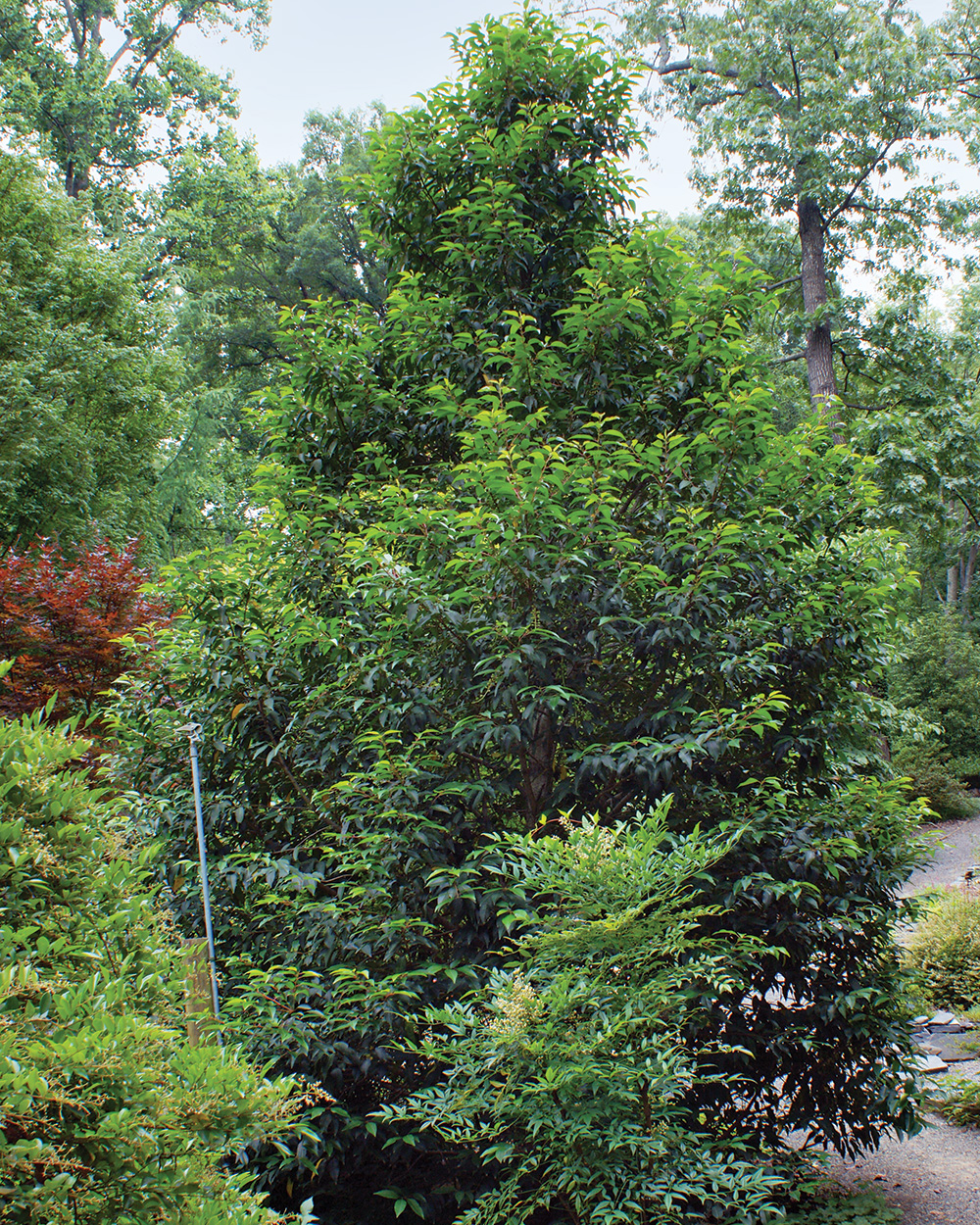
P. lusitanica
Zones: 7–10
Size: 10 to 25 feet tall and wide
Conditions: Full sun to partial shade; moist, well-drained soil
Native range: Southwestern Europe and Morocco
While not quite as cold-hardy as cherry laurel, this relative makes a handsome substitute, with glossy evergreen foliage and fragrant white flowers in summer. These are followed by red fruits in fall that turn a dark purple. In addition to its resistance to shot hole fungus and its four seasons of interest, it is a larval host for the eastern tiger swallowtail butterfly. Portuguese laurel tolerates pruning well and can be kept to 6 feet tall by regularly cutting it back. As the name suggests, this laurel hails from Portugal, Spain, and even northern Africa, making it exceptionally heat tolerant and relatively drought tolerant once established.
Switch things up with Coppertone™ distylium’s color-changing foliage
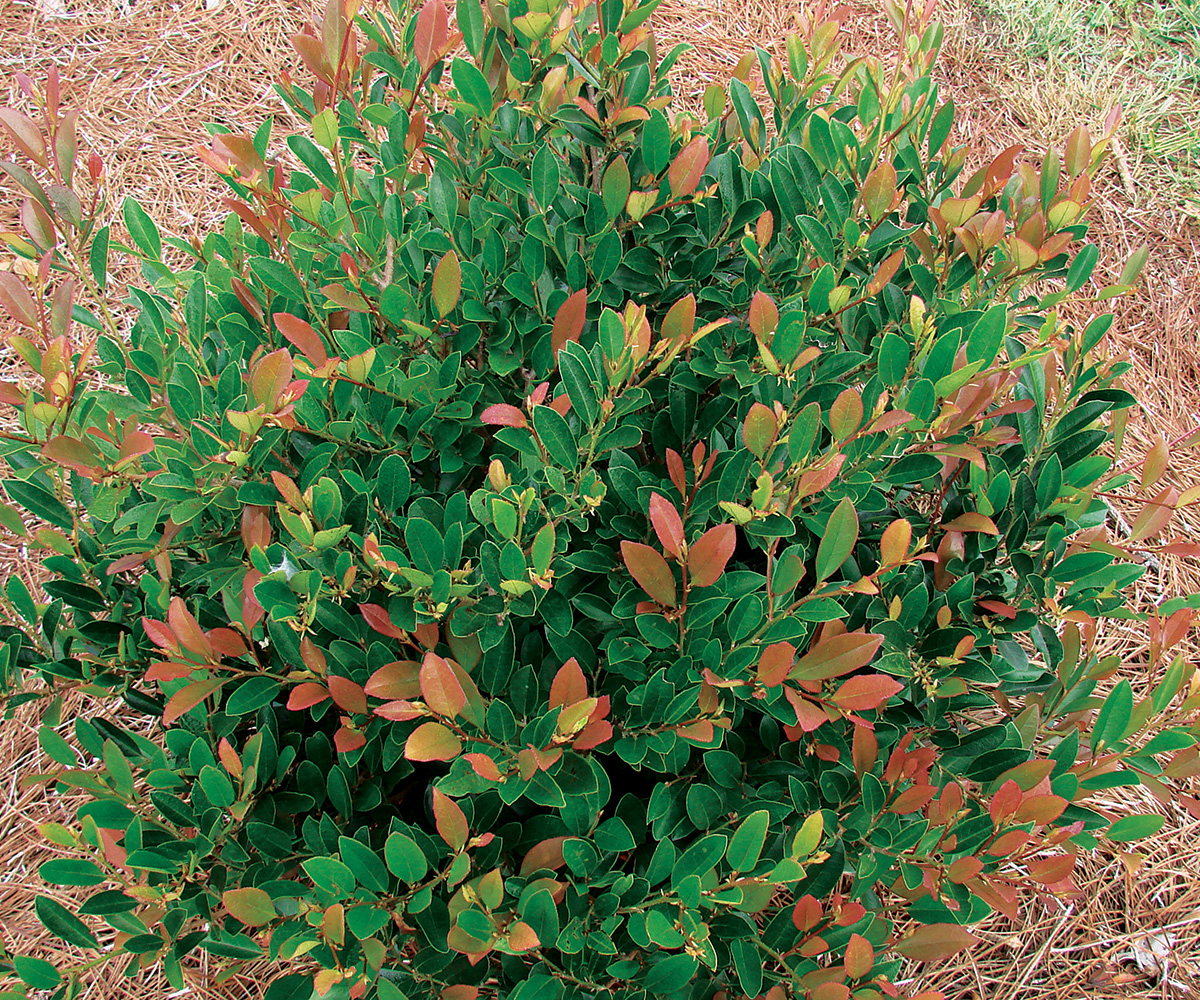
Distylium ‘PIIDIST-III’
Zones: 7–9
Size: 3 to 4 feet tall and 4 to 5 feet wide
Conditions: Full sun to partial shade; wet to well-drained soil
Native range: Hybrid
Distylium has risen quickly from the obscurity of botanical gardens into the mainstream. It is becoming a go-to shrub for landscapers looking for reliable evergreens. The performance has been mixed on some of the earliest entries to the market, but Coppertone™ has proved its worth with bluish-green foliage that emerges coppery red with a habit that spreads outward. Dark red-burgundy bottlebrush flowers appear in late winter. Once established, it will tolerate both damp soils and moderate drought. Reports indicate it is fairly deer resistant, but your deer may not have read the tag.
Problem plant: Red tip photinia
|
|
(Photinia × fraseri)
Susceptible to: Leaf spot
Try these instead:
Red Fury™ photinia is an easy-care, wildly showy evergreen
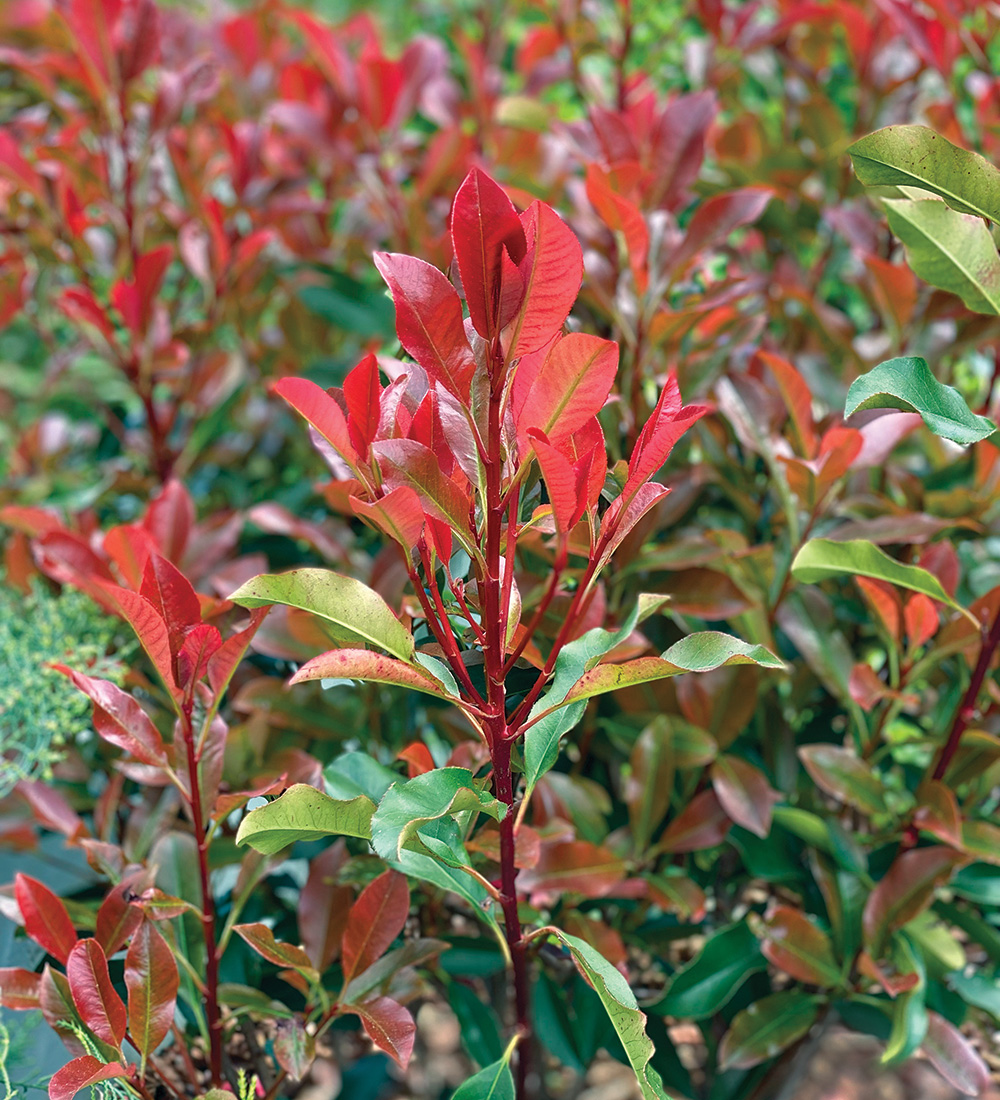
P. glabra ‘Parsur’
Zones: 7–11
Size: 8 to 12 feet tall and 5 to 8 feet wide
Conditions: Full sun; well-drained soil
Native range: Southern China and Japan
The once ubiquitous red tip photinia is synonymous with leaf spot, but this selection (sometimes sold as Dynamo Red™) is quite disease resistant. It grows quickly to 10 feet tall, making it excellent for hedging. New growth is glossy, bright burgundy-red and the form is very dense, making pruning generally unnecessary except to control height. White flower clusters are showy among the emerging red leaves. Once established, Red Fury™ is tough and relatively drought tolerant.
Plant a wall of fragrance with holly tea olive
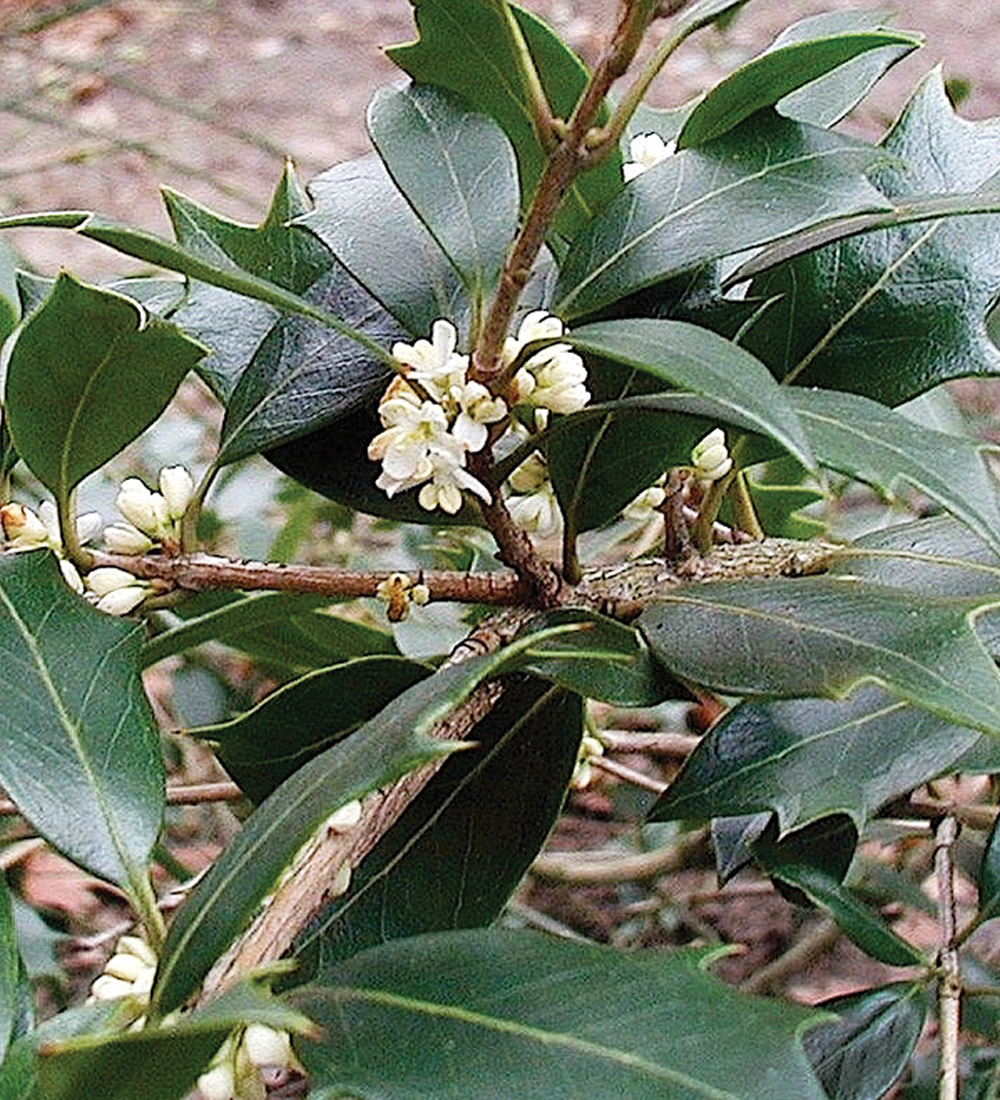
Osmanthus heterophyllus
Zones: 6–10
Size: 8 to 15 feet tall and 8 to 10 feet wide
Conditions: Full sun to partial shade; moist, well-drained soil
Native range: Japan and Taiwan
Holly tea olive is an upright evergreen shrub with spine-edged, holly-like leaves when young, which develop smooth sides with just a terminal point as the plant ages. White flowers bloom in fall and are intensely fragrant, especially in the evening. The foliage is a dark black-green, which highlights the bright blossoms. This shrub makes for an excellent hedge and can be pruned for size. It will have a more open habit if grown in shade and a more dense one in sun.
Mark Weathington is the director of the JC Raulston Arboretum at North Carolina State University in Raleigh, and the author of Gardening in the South: The Complete Homeowner’s Guide.
Sources:
The following mail-order sources may offer some of the plants featured in this article:
- Wilson Bros. Gardens, McDonough, GA; 770-573-1778; wilsonbrosgardens.com
- Sugar Creek Gardens, St. Louis, MO; 314-965-3070; sugarcreekgardens.com
- Nature Hills Nursery, Omaha, NE; 402-934-8116; naturehills.com
- American Meadows, Burlington, VT; 802-227-7200; americanmeadows.com
- Fast Growing Trees, Fort Mill, SC; 800-973-8959; fast-growing-trees.com
- McKay Nursery, Waterloo, WI; 920-478-2121; mckaynursery.com
Fine Gardening Recommended Products
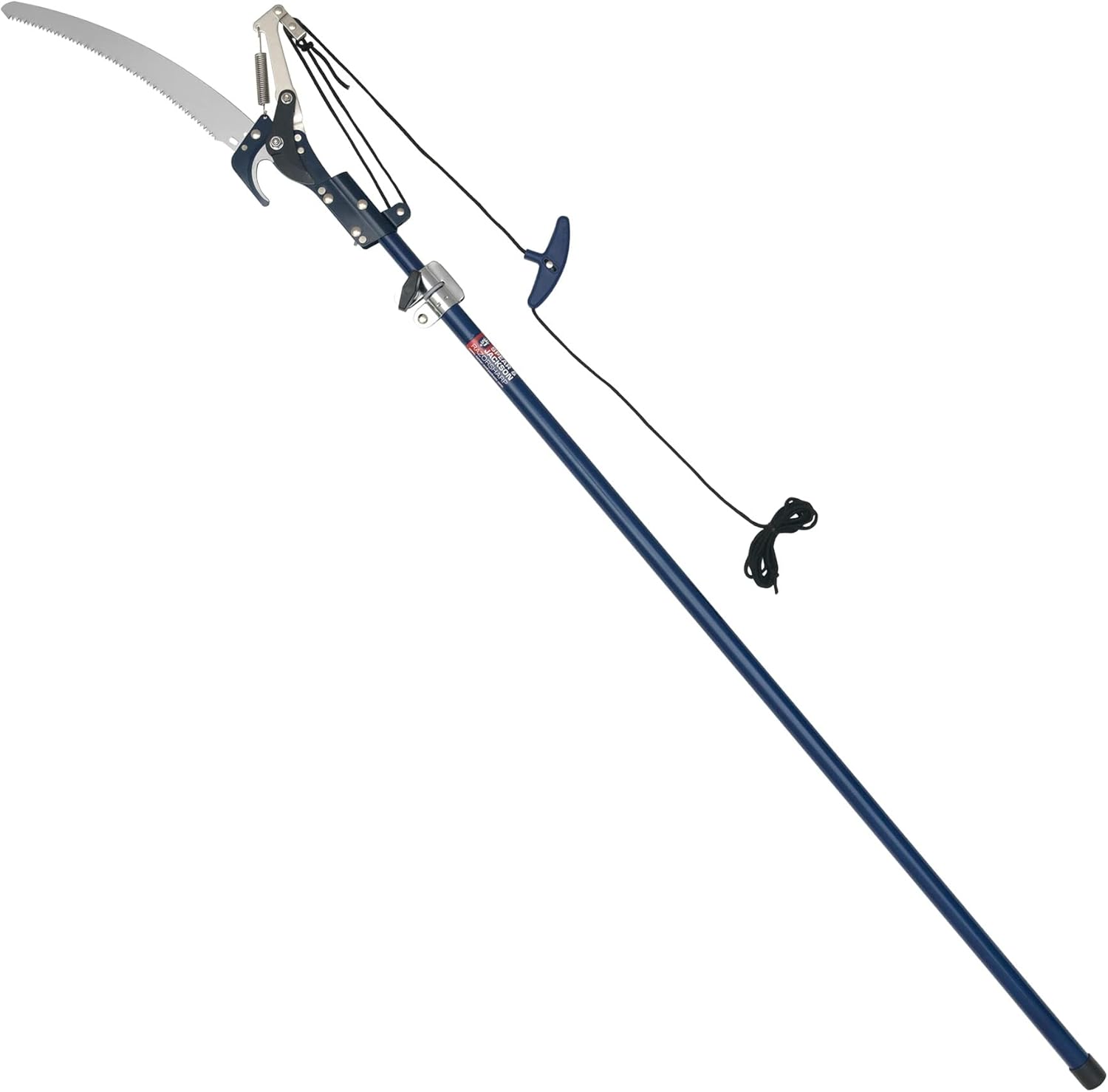
Spear & Jackson 4930FZ Razorsharp Telescopic Tree Pruner
Fine Gardening receives a commission for items purchased through links on this site, including Amazon Associates and other affiliate advertising programs.
Telescopic tree pruner with SK5 carbon steel blade which stays sharper for longer. Variable length telescopic handle extends up to 92 Inch (2340mm). Lopper for cutting branches up to 1.2″ (30mm). 13 inch (330mm) saw is ideal for cutting thicker branches. Supplied with a long cord and pull-action handle. Part of the Razorsharp Advantage collection, the obvious choice for gardeners who demand and expect precise, powerful performance. “Grow Your Own” Great British Growing 2020 Award Winners.
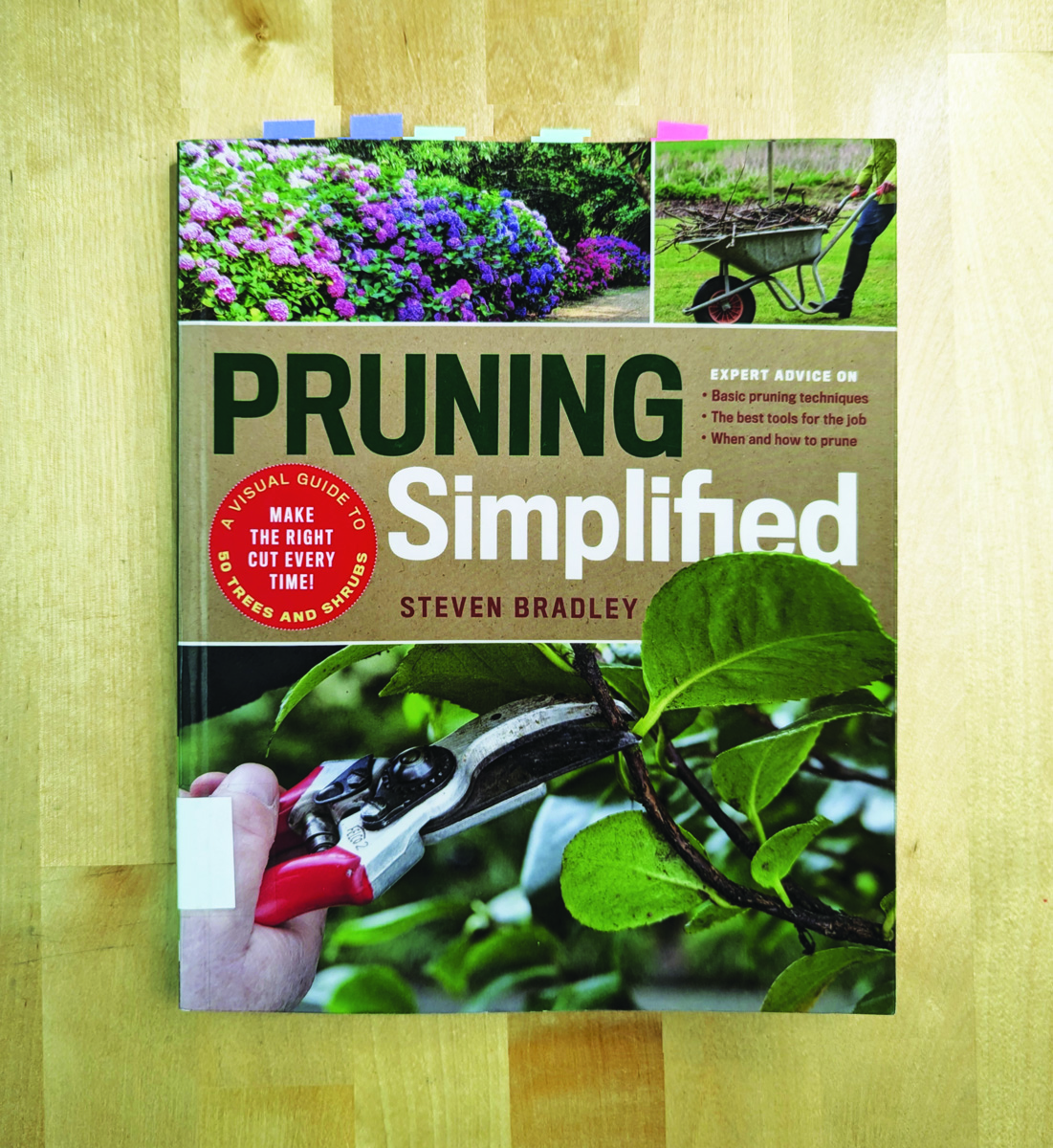
Pruning Simplified: A Step-by-Step Guide to 50 Popular Trees and Shrubs
Fine Gardening receives a commission for items purchased through links on this site, including Amazon Associates and other affiliate advertising programs.
Pruning Simplified shows you exactly how to do it. This must-have guide offers expert advice on the best tools for the job, specific details on when to prune, and clear instructions on how to prune. Profiles of the 50 most popular trees and shrubs—including azaleas, camellias, clematis, hydrangeas, and more—include illustrated, easy-to-follow instructions that will ensure you make the right cut the first time.
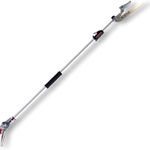
ARS Telescoping Long Reach Pruner
Fine Gardening receives a commission for items purchased through links on this site, including Amazon Associates and other affiliate advertising programs.
Telescopes from 4 to 7′. Cut and Hold (160) Blades. Drop forged blades for unsurpassed long lasting sharpness. Lightweight, 2.3 lbs., for continued use. Perfectly balanced for easy pruning.

